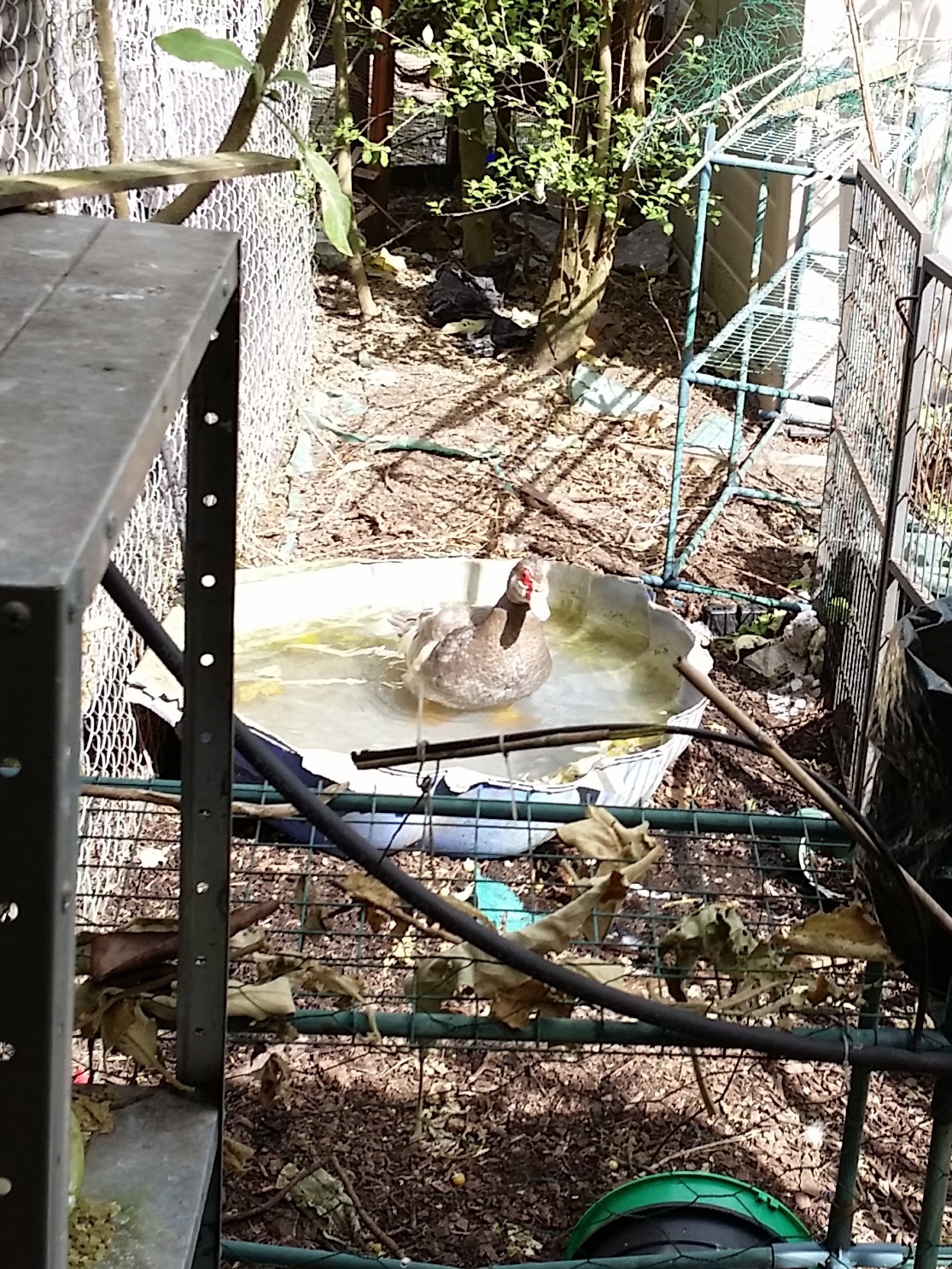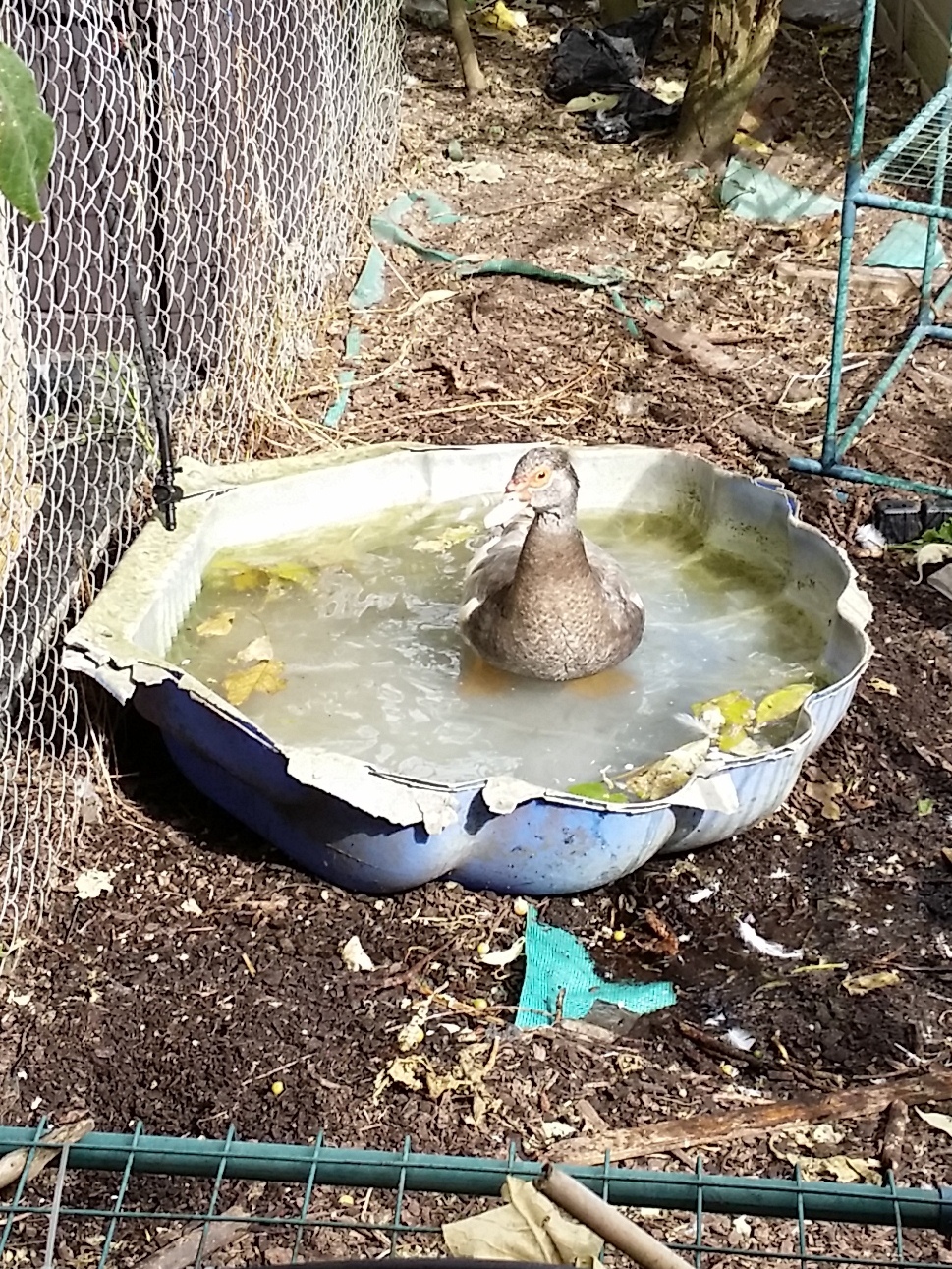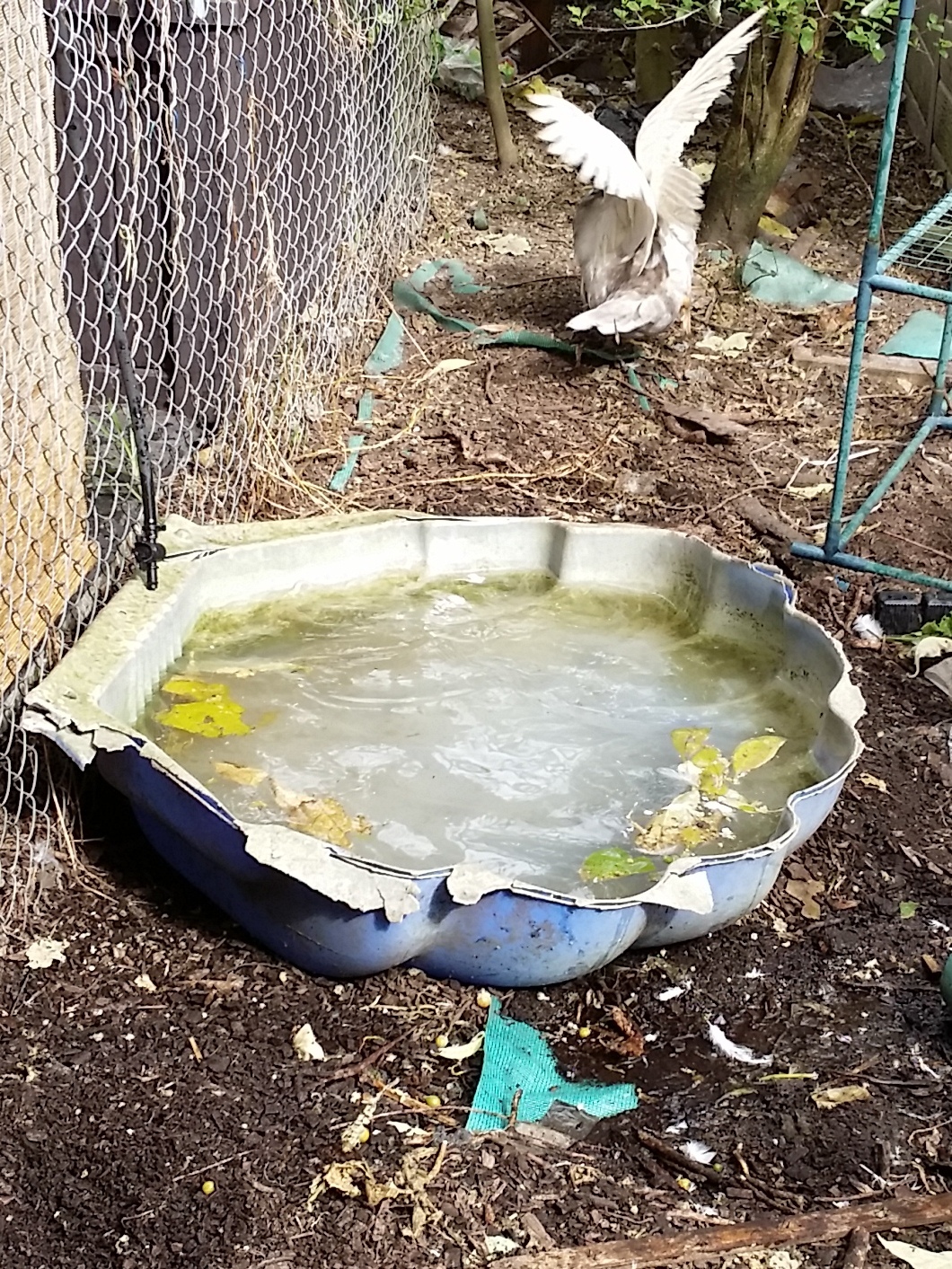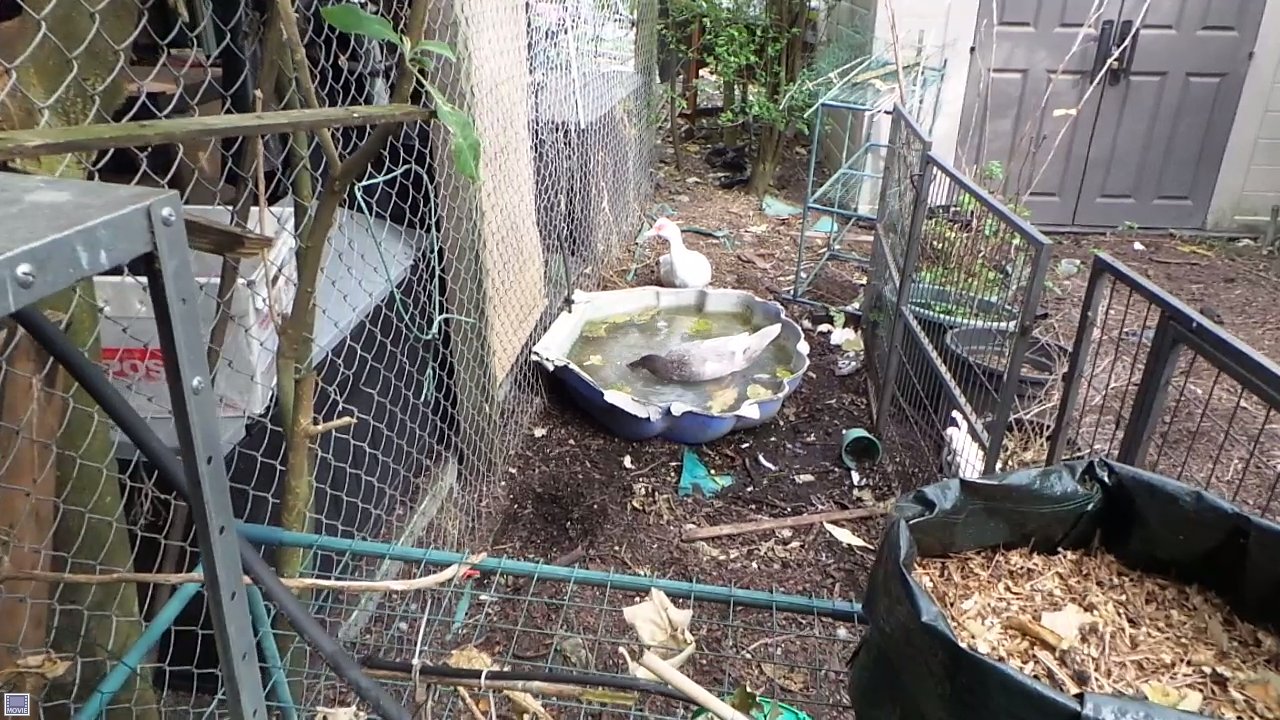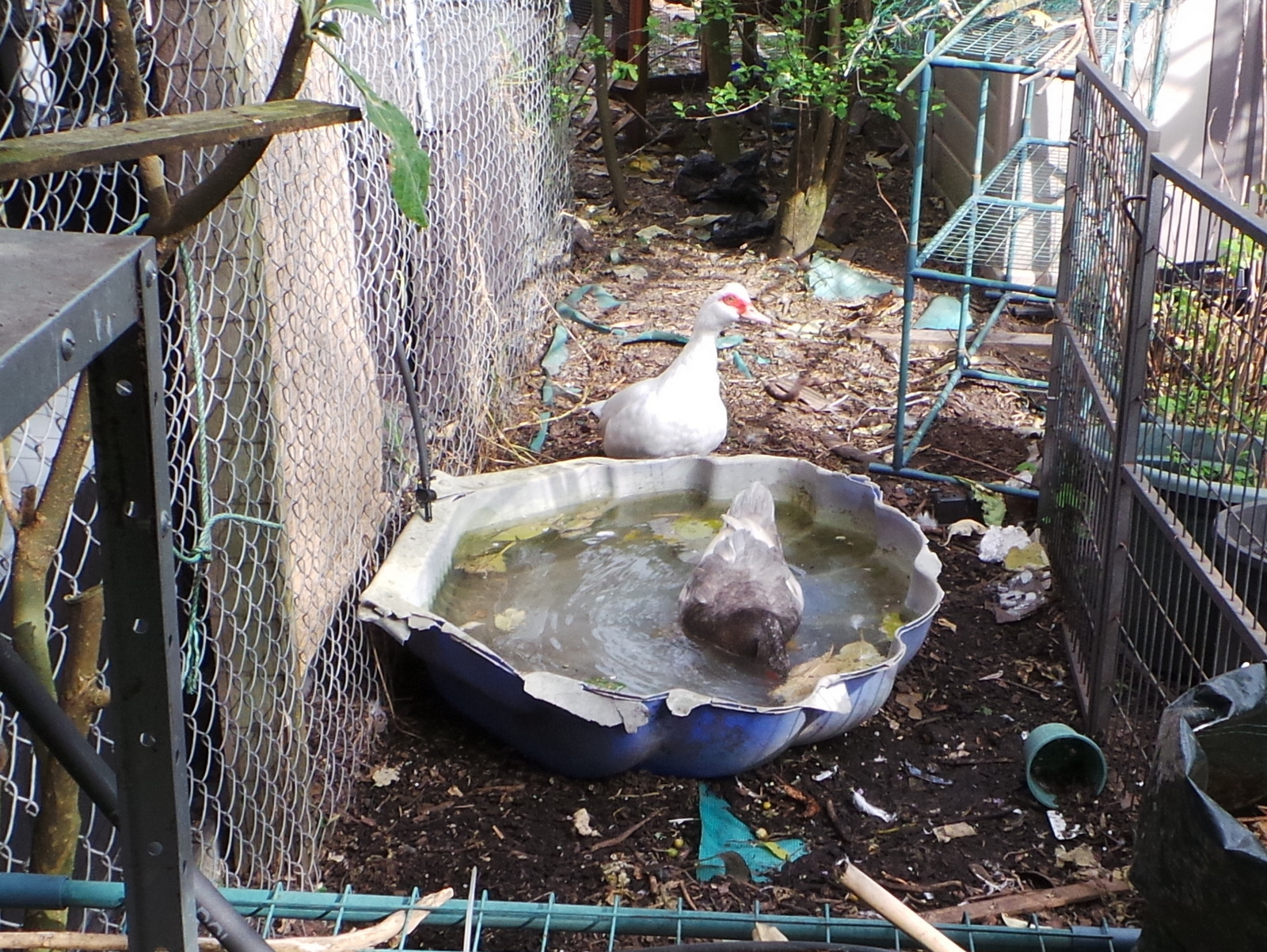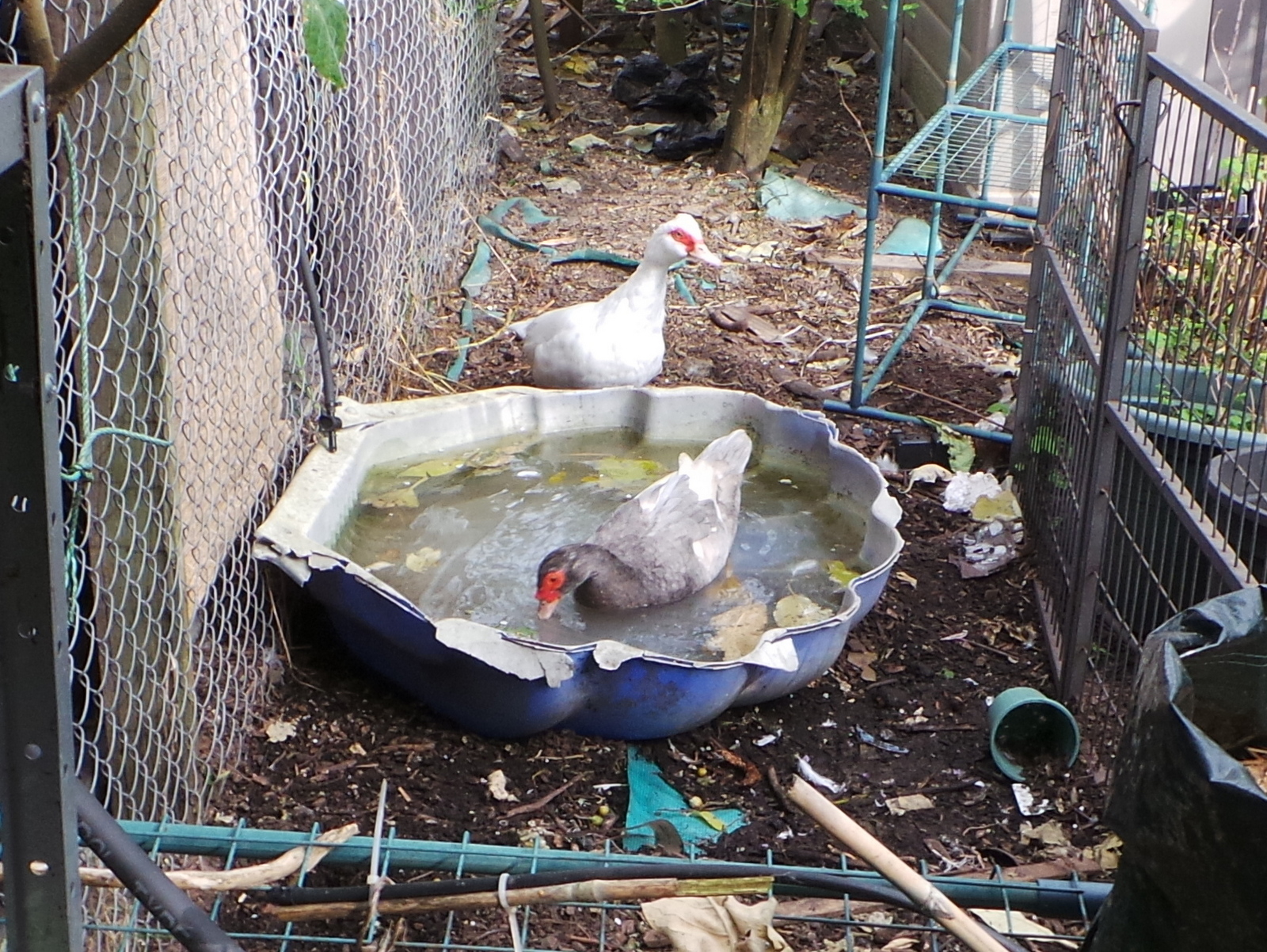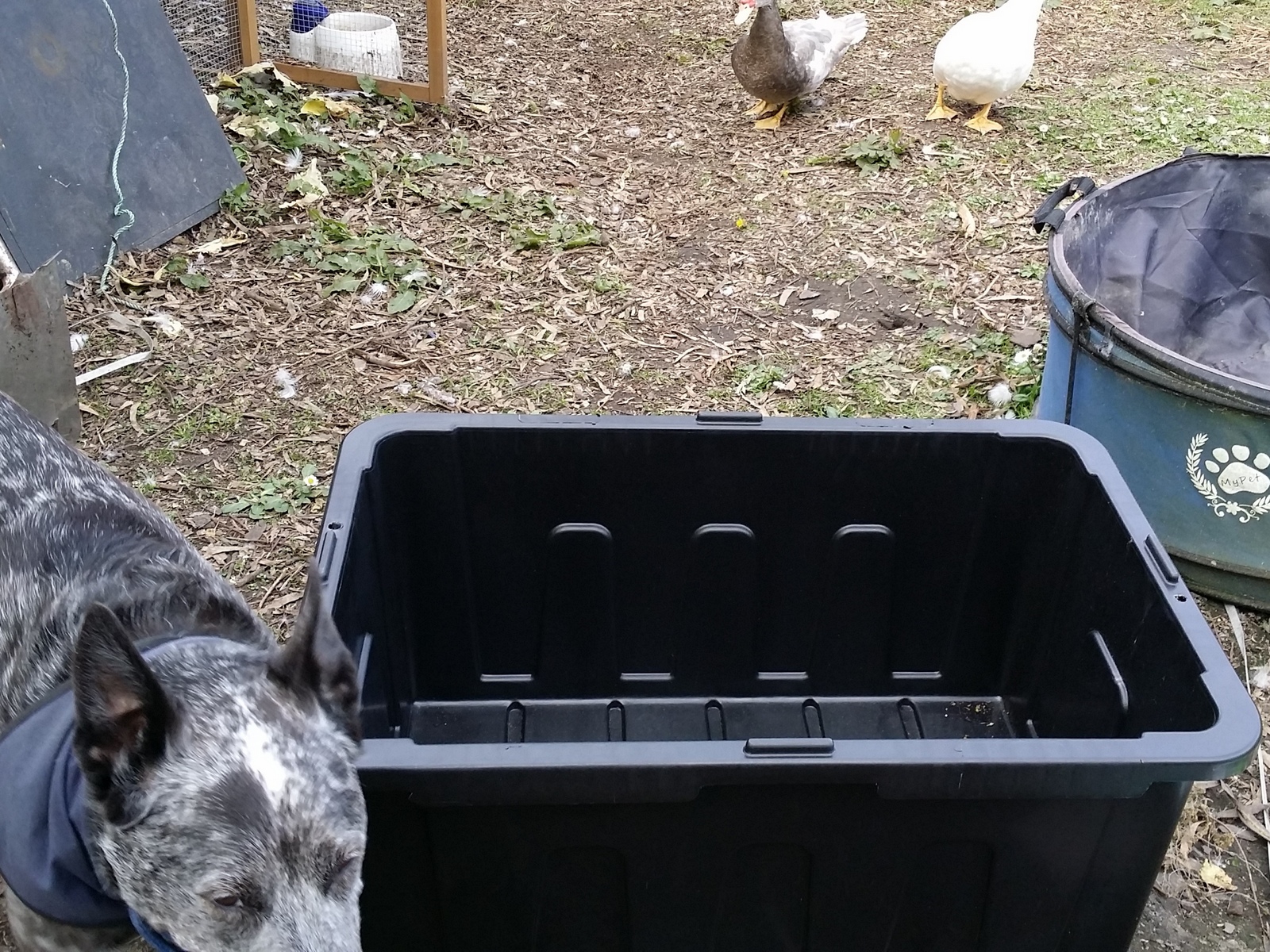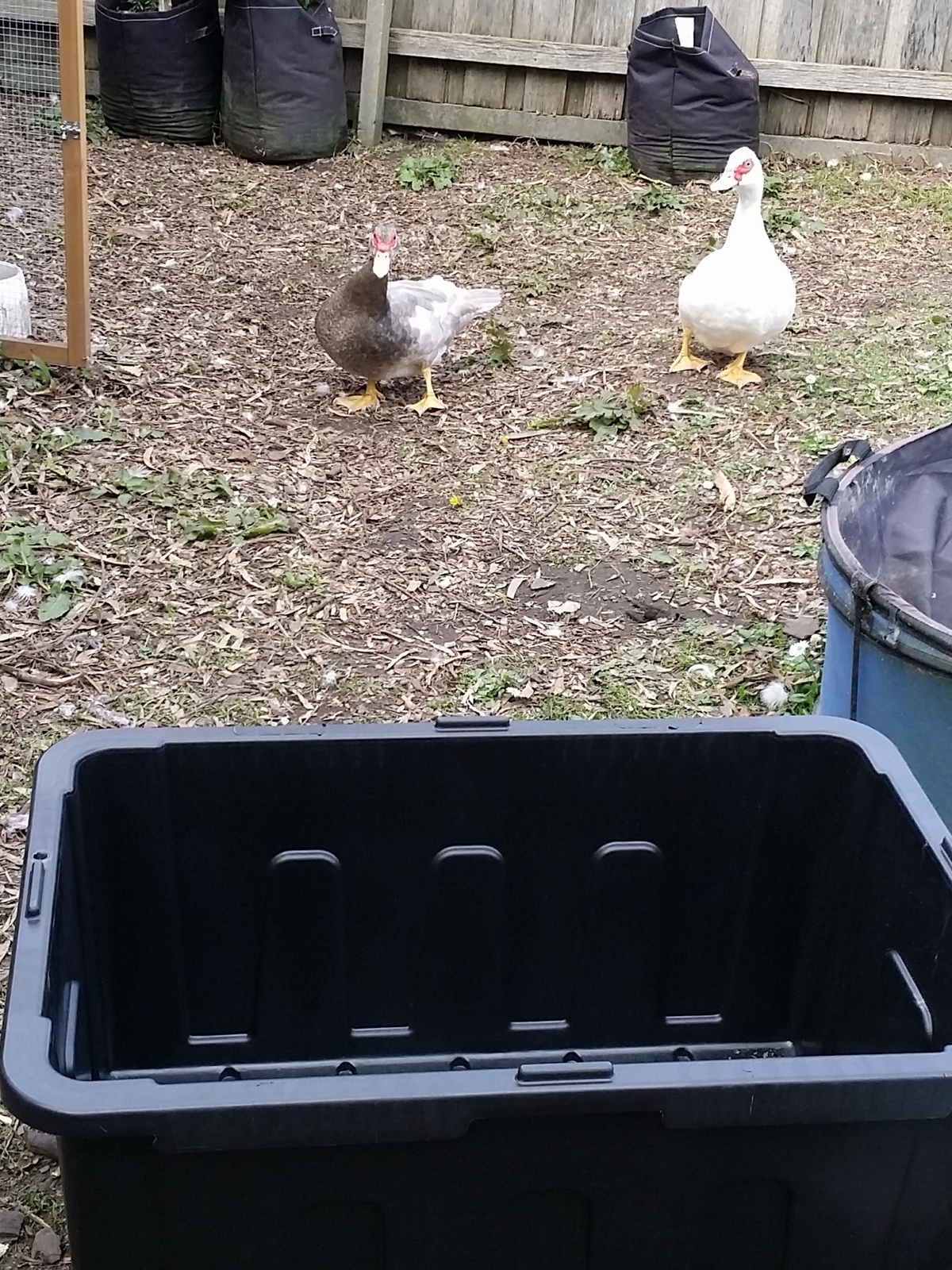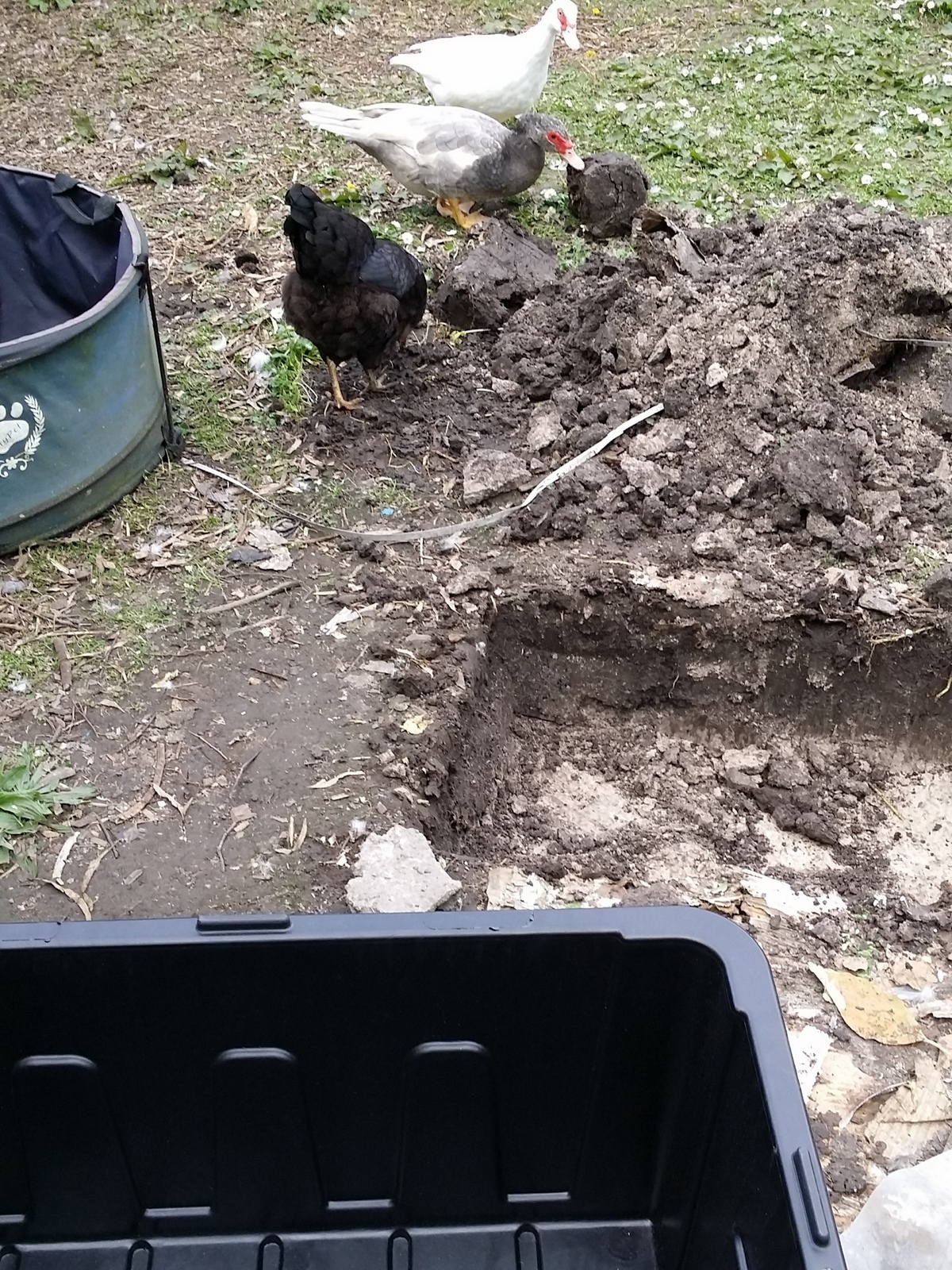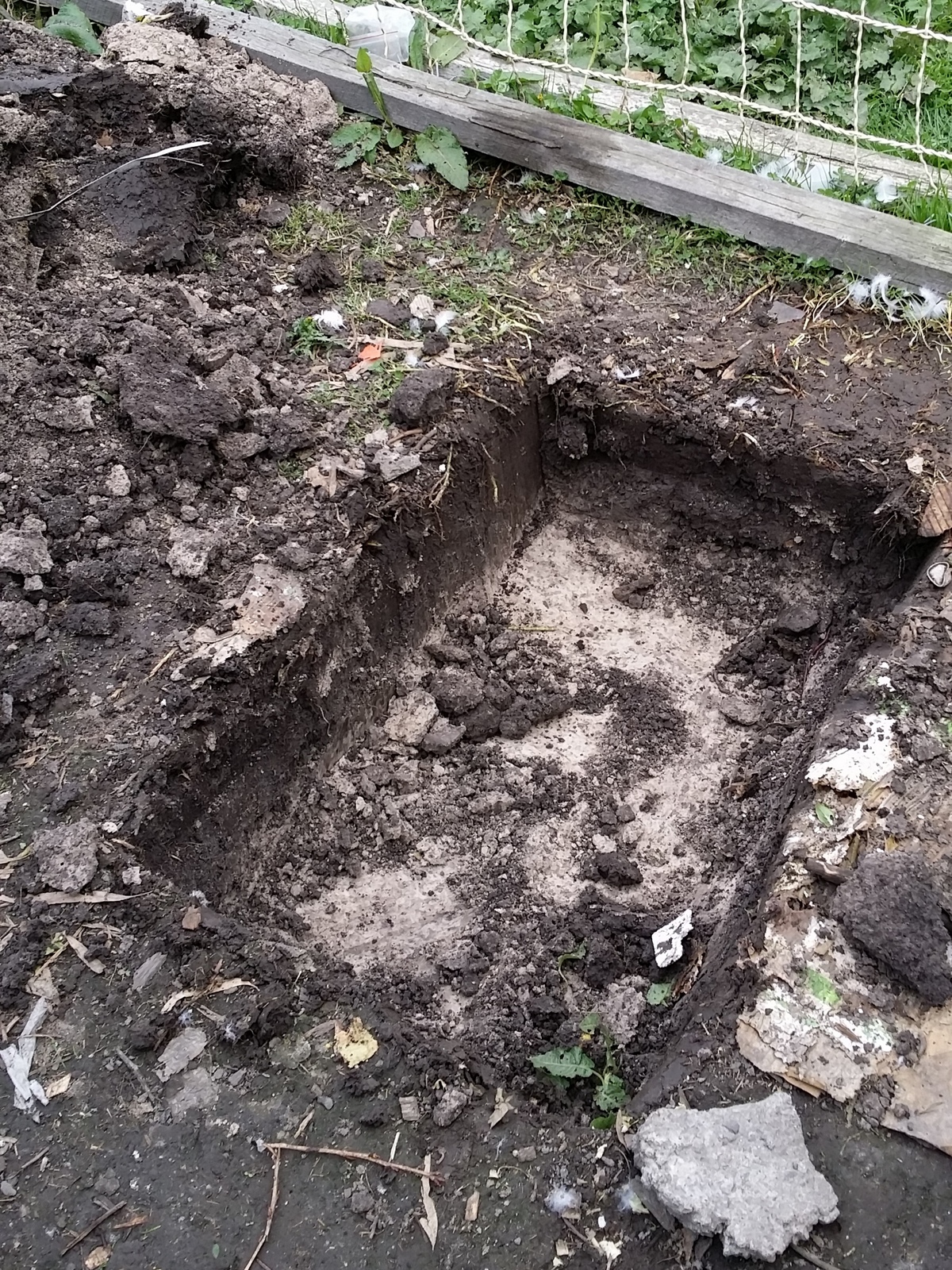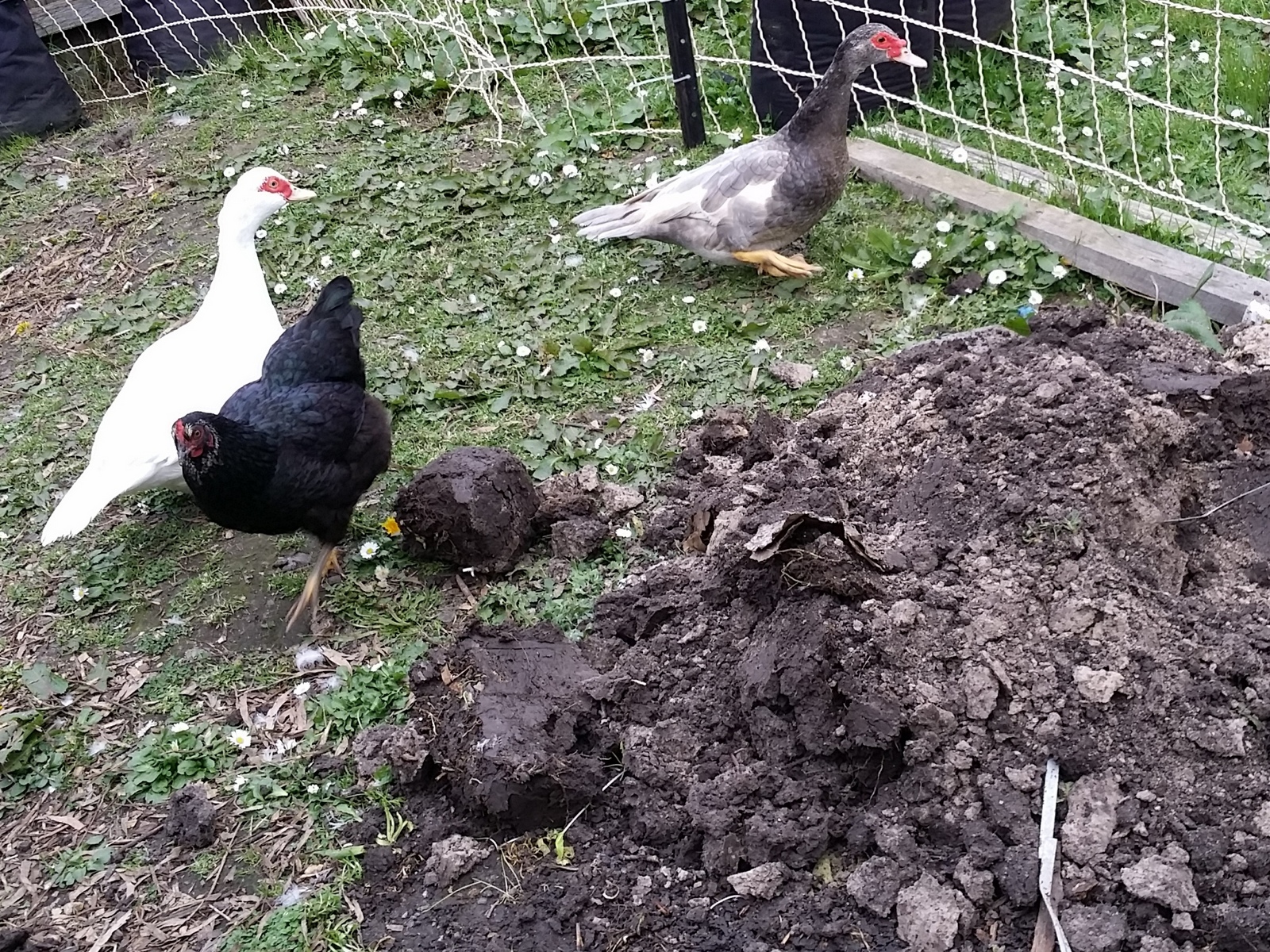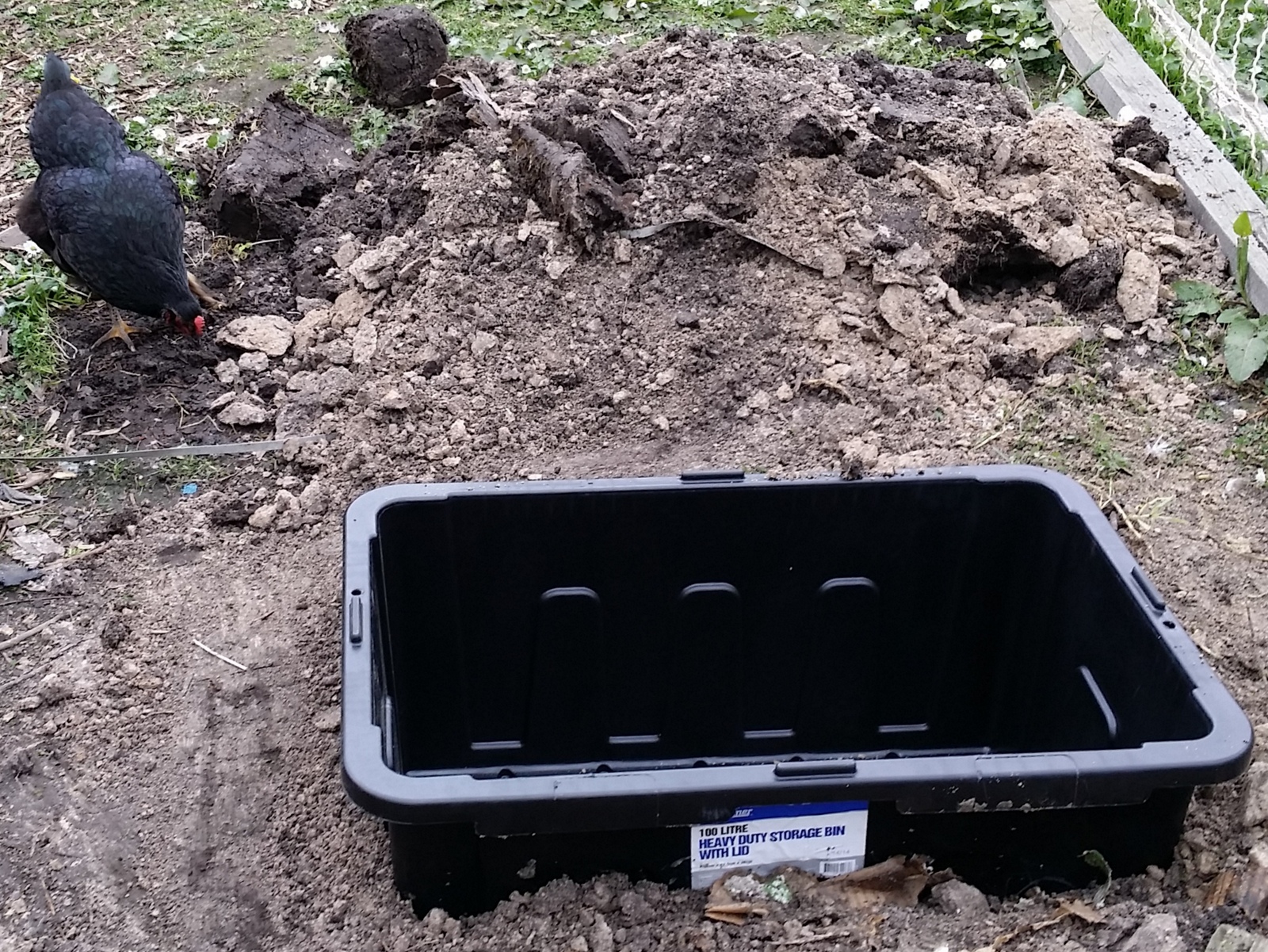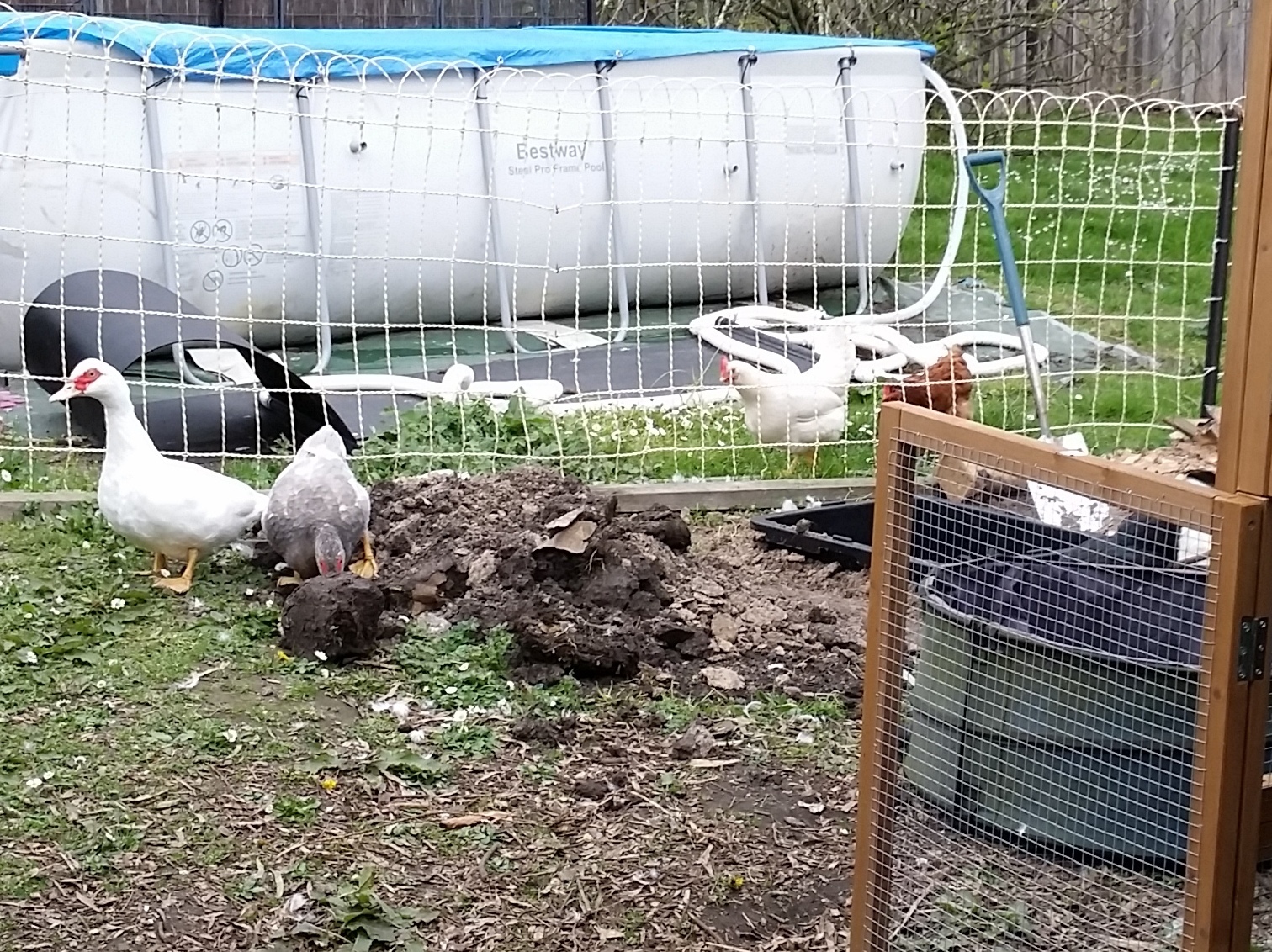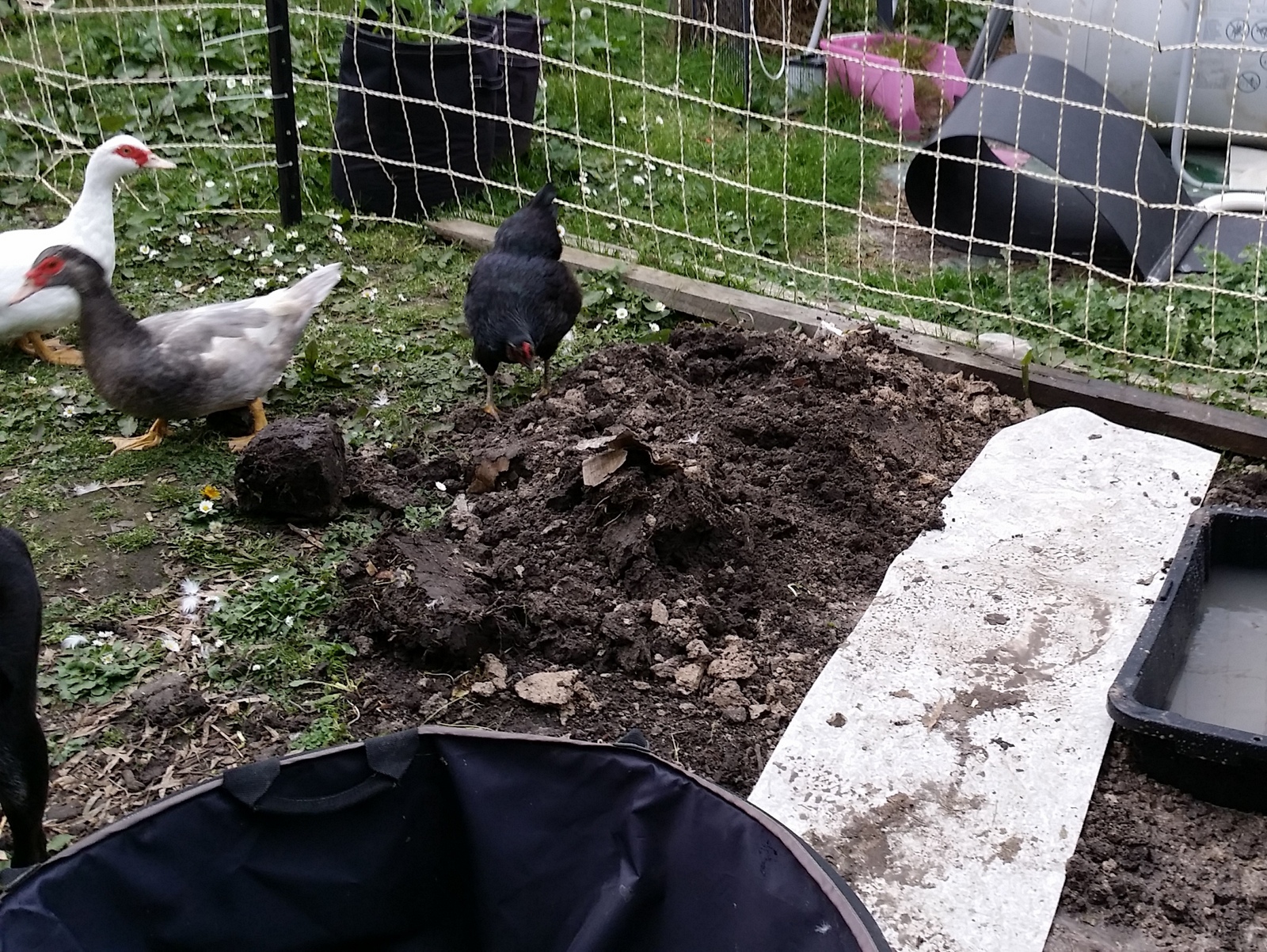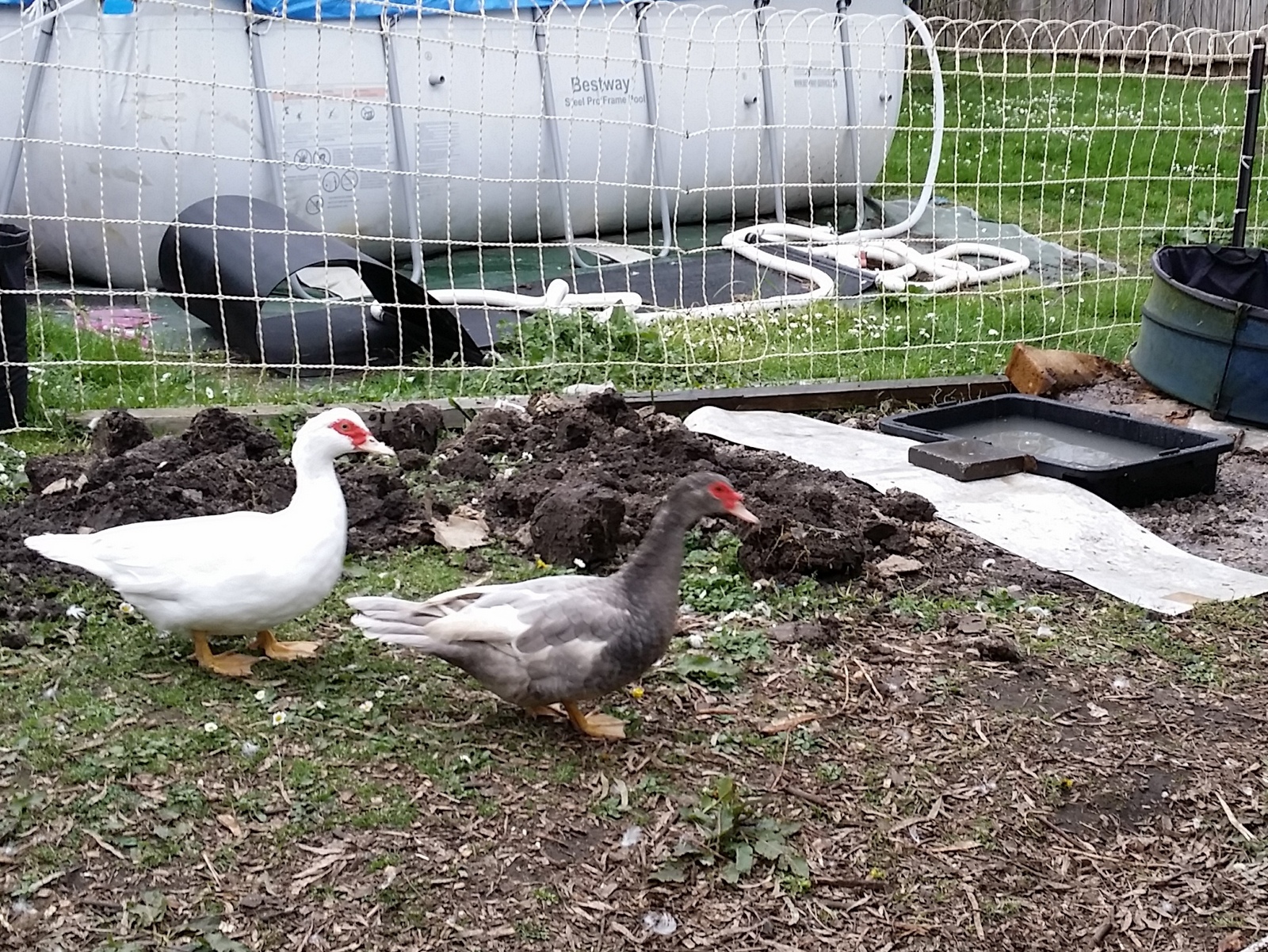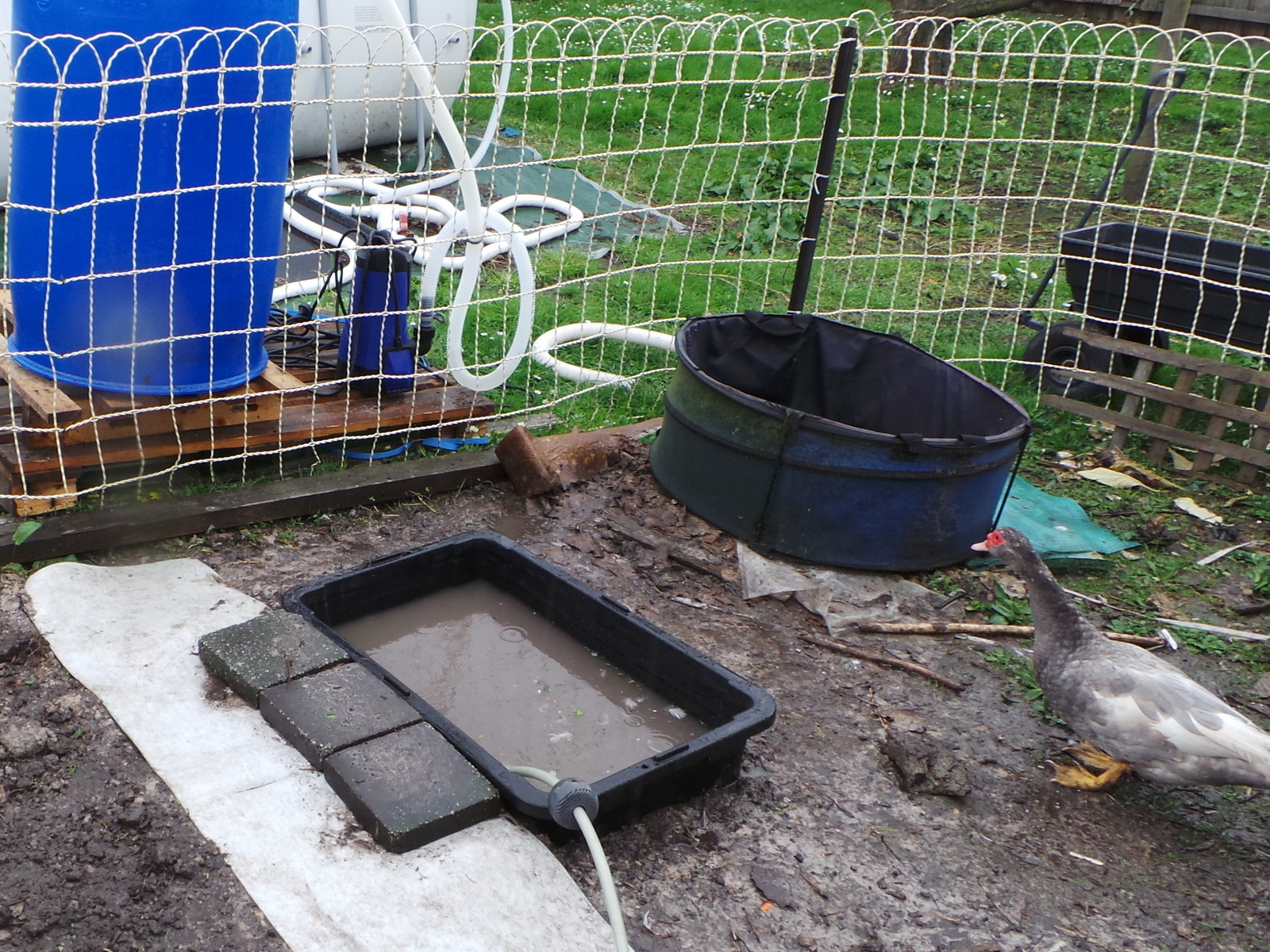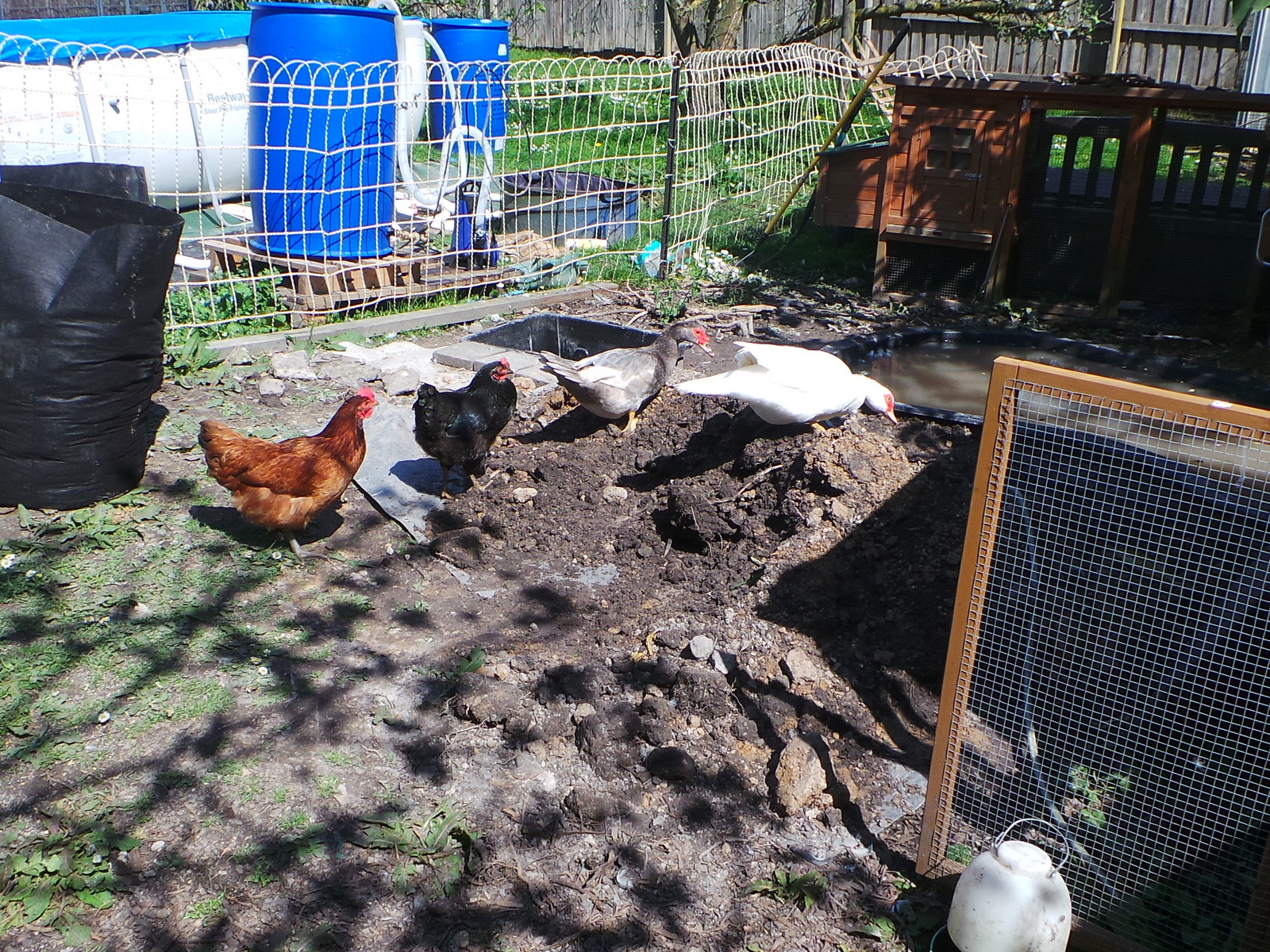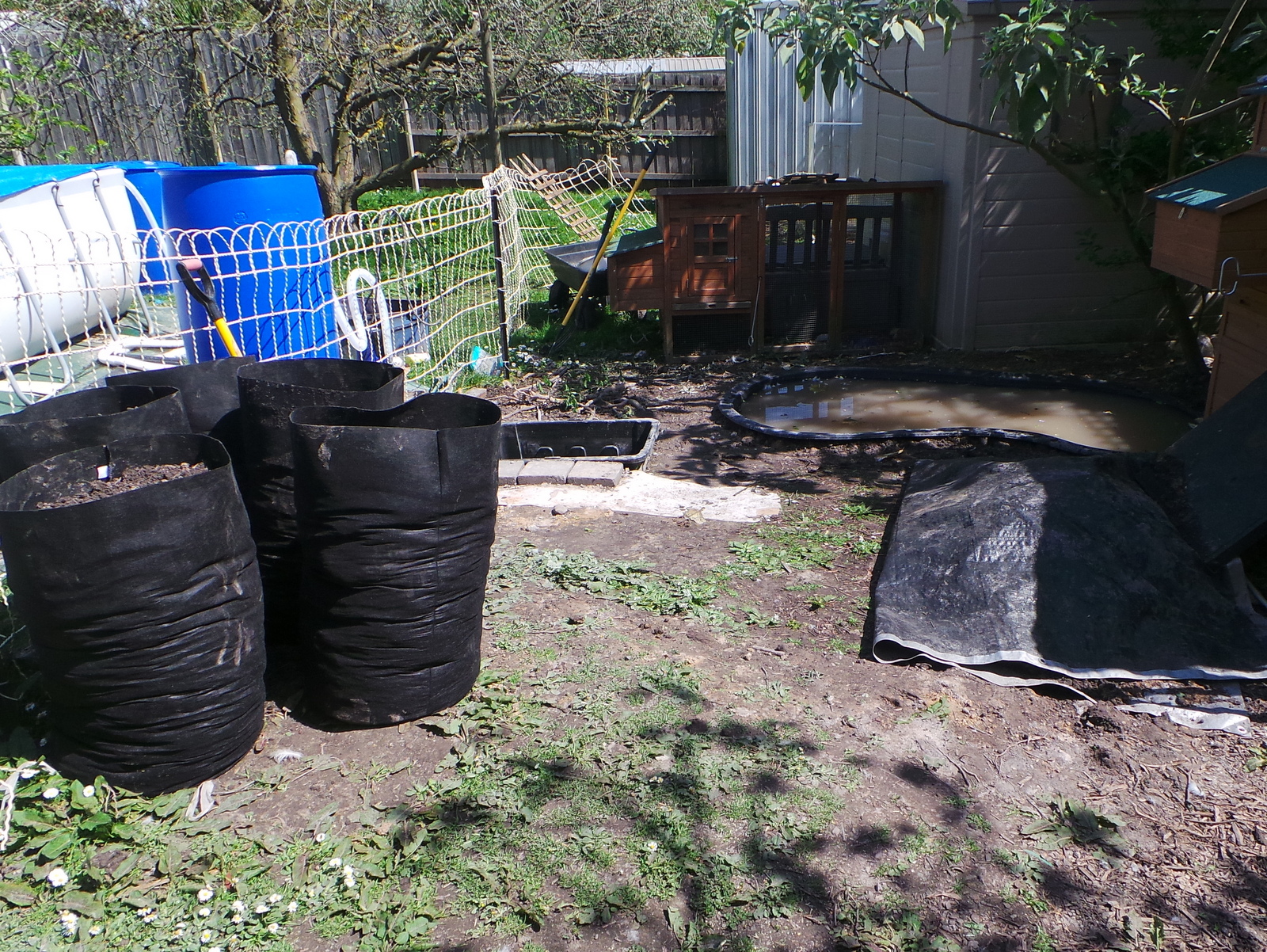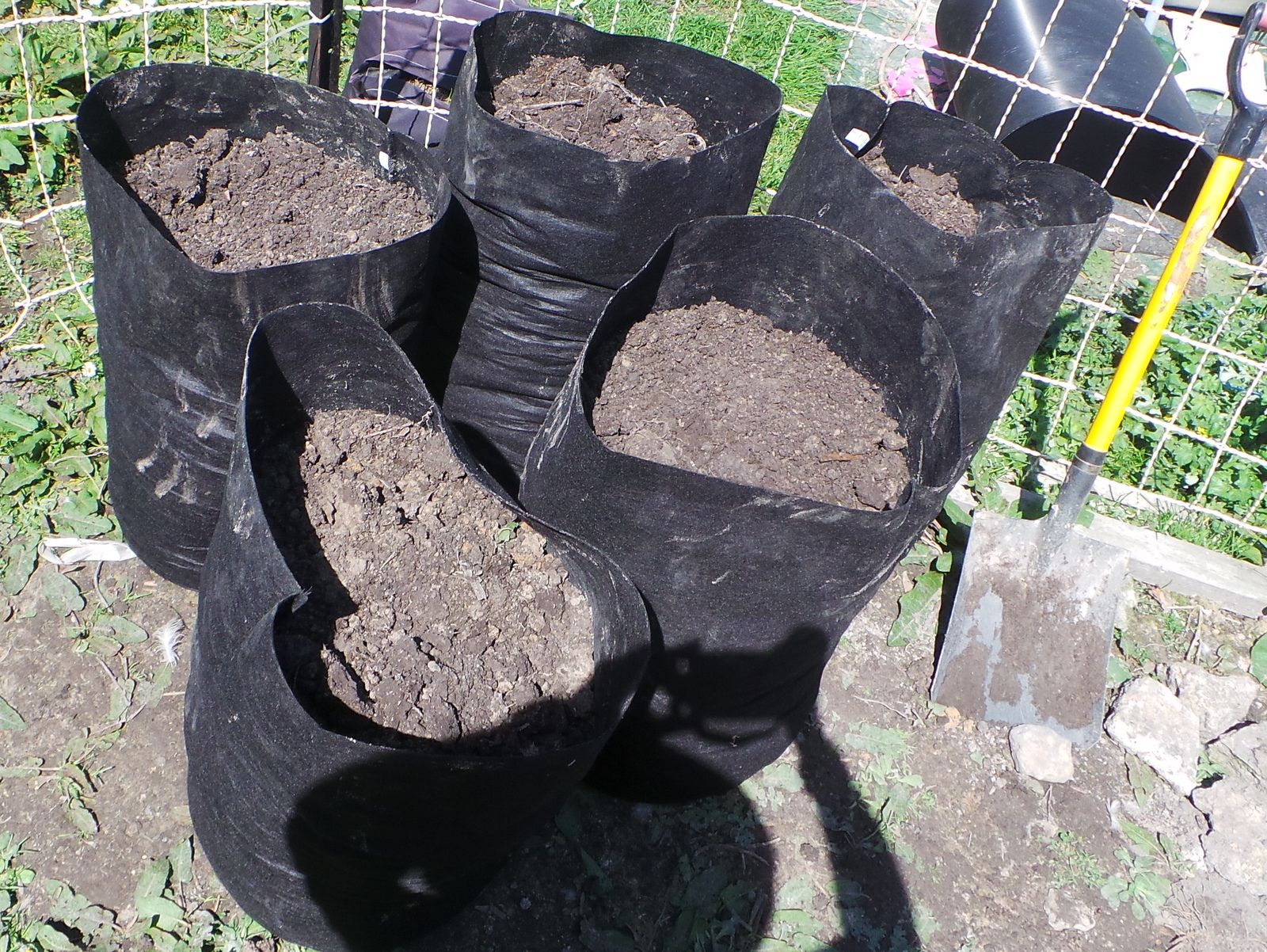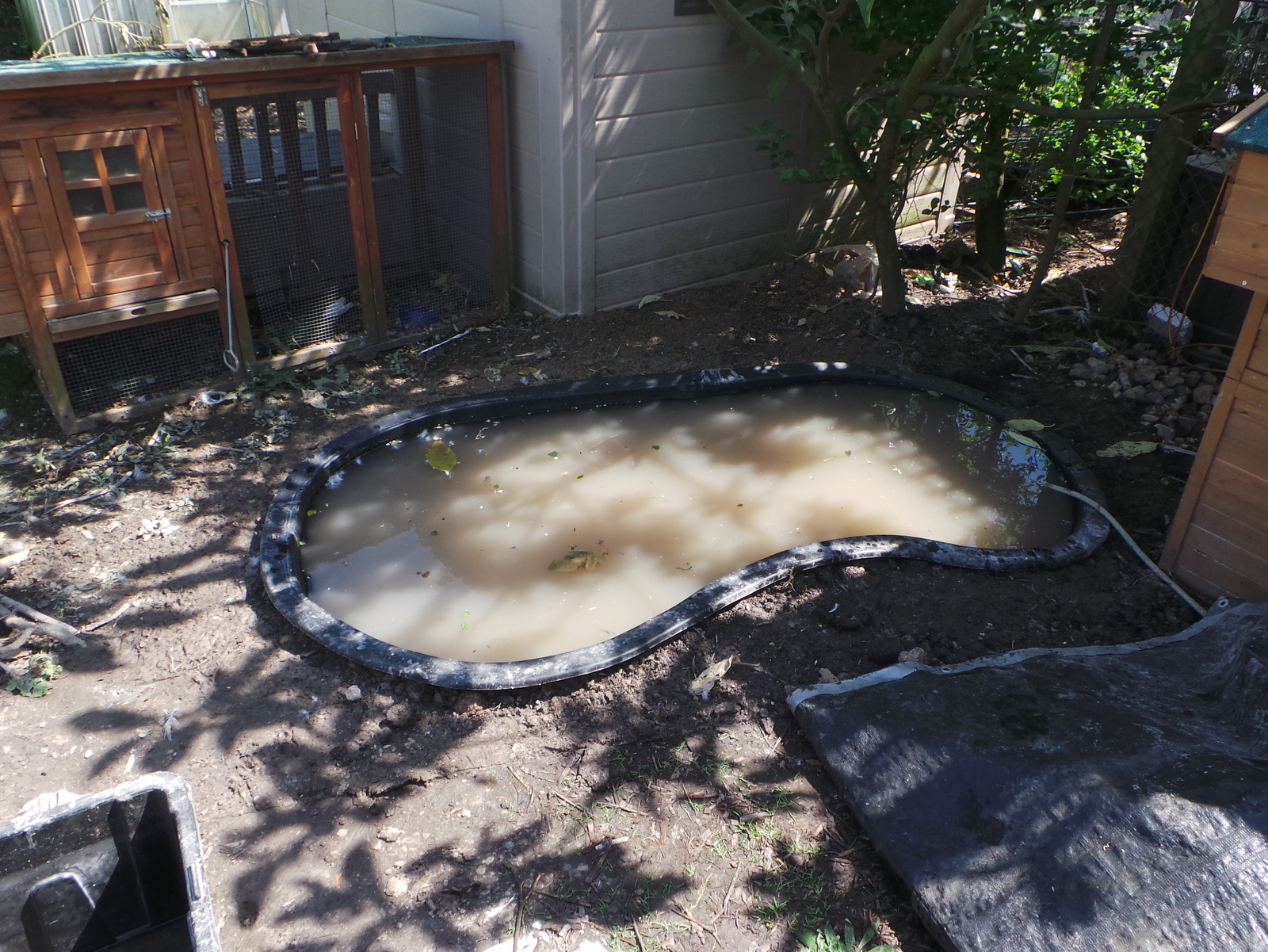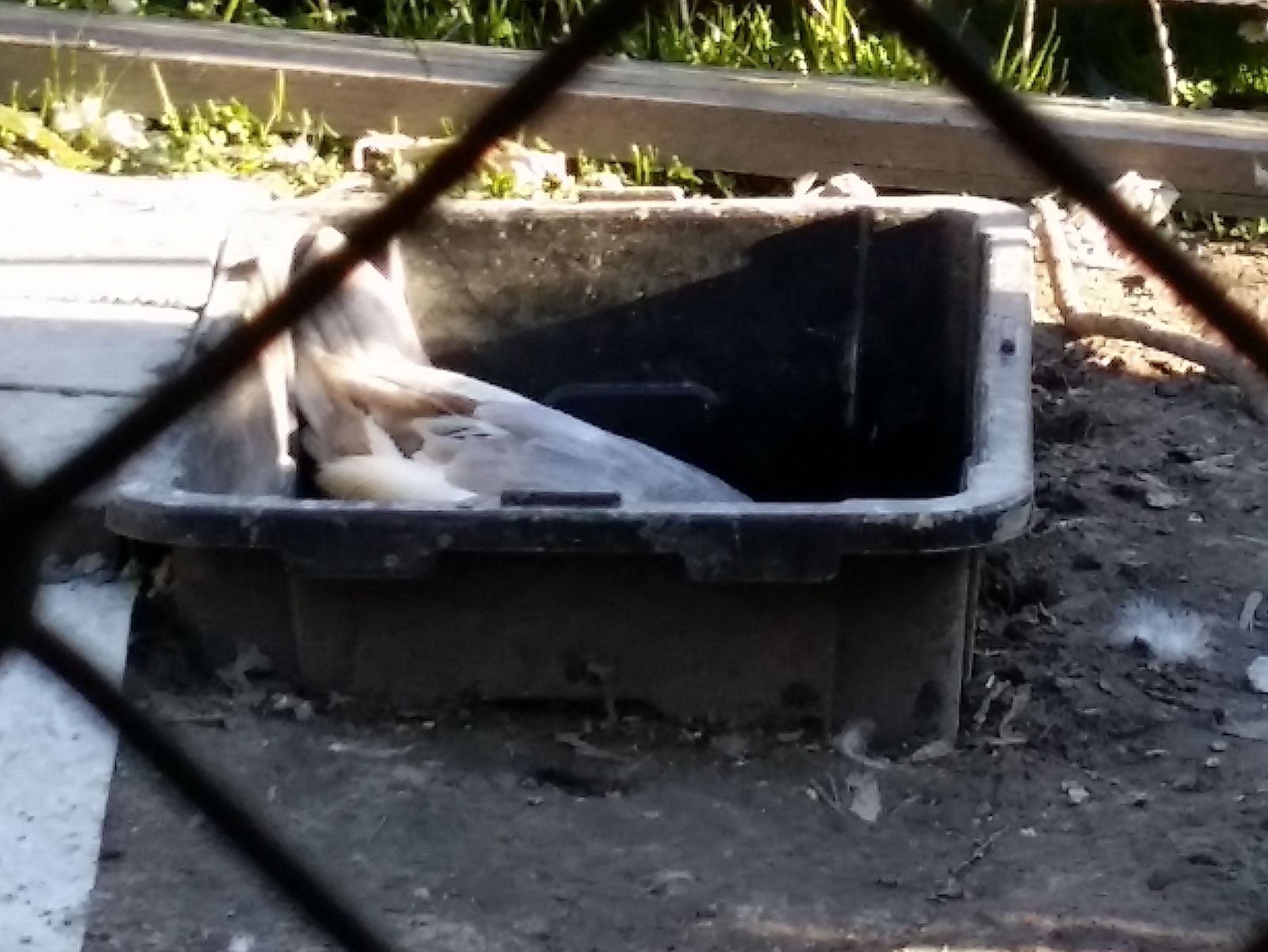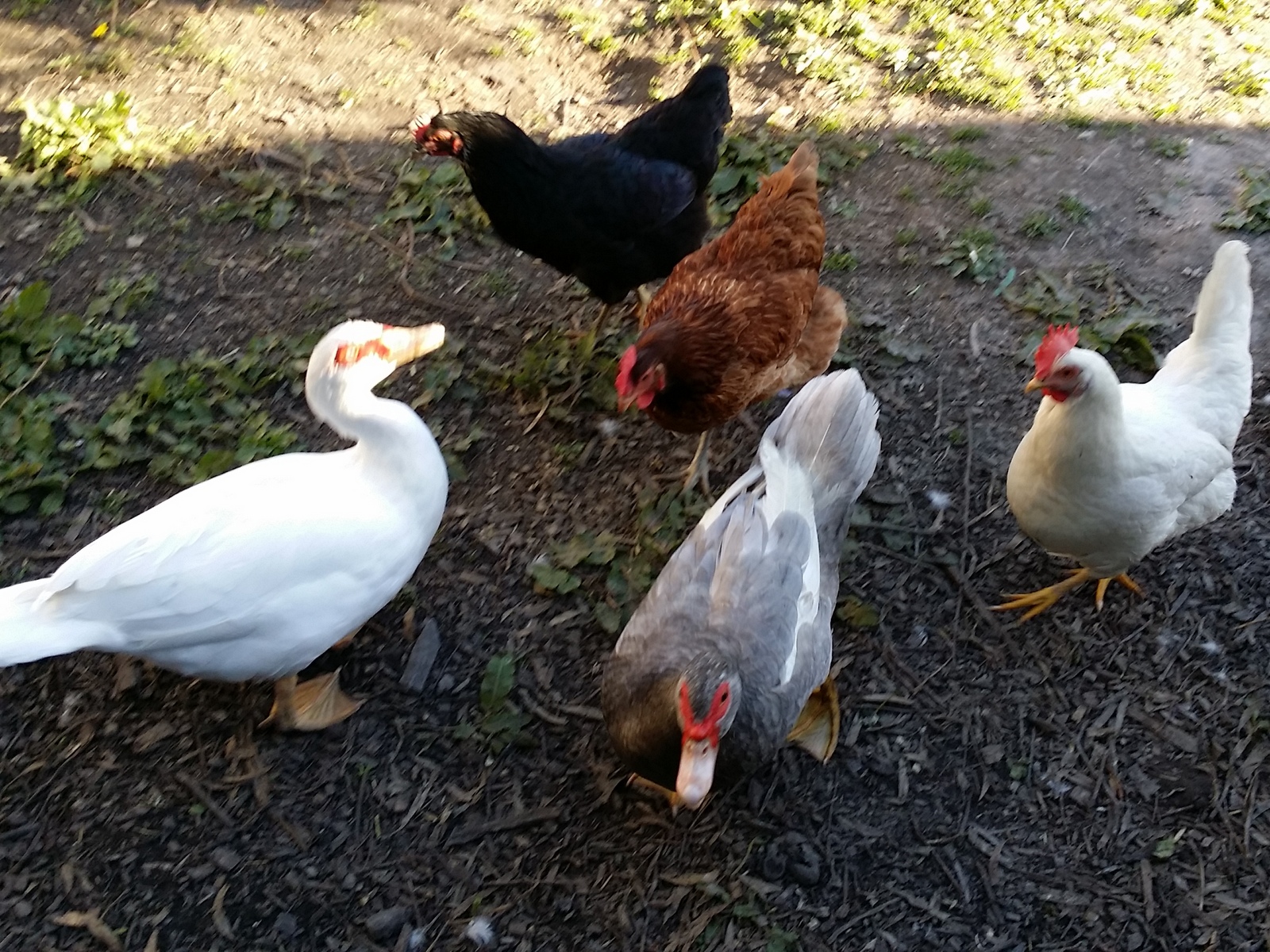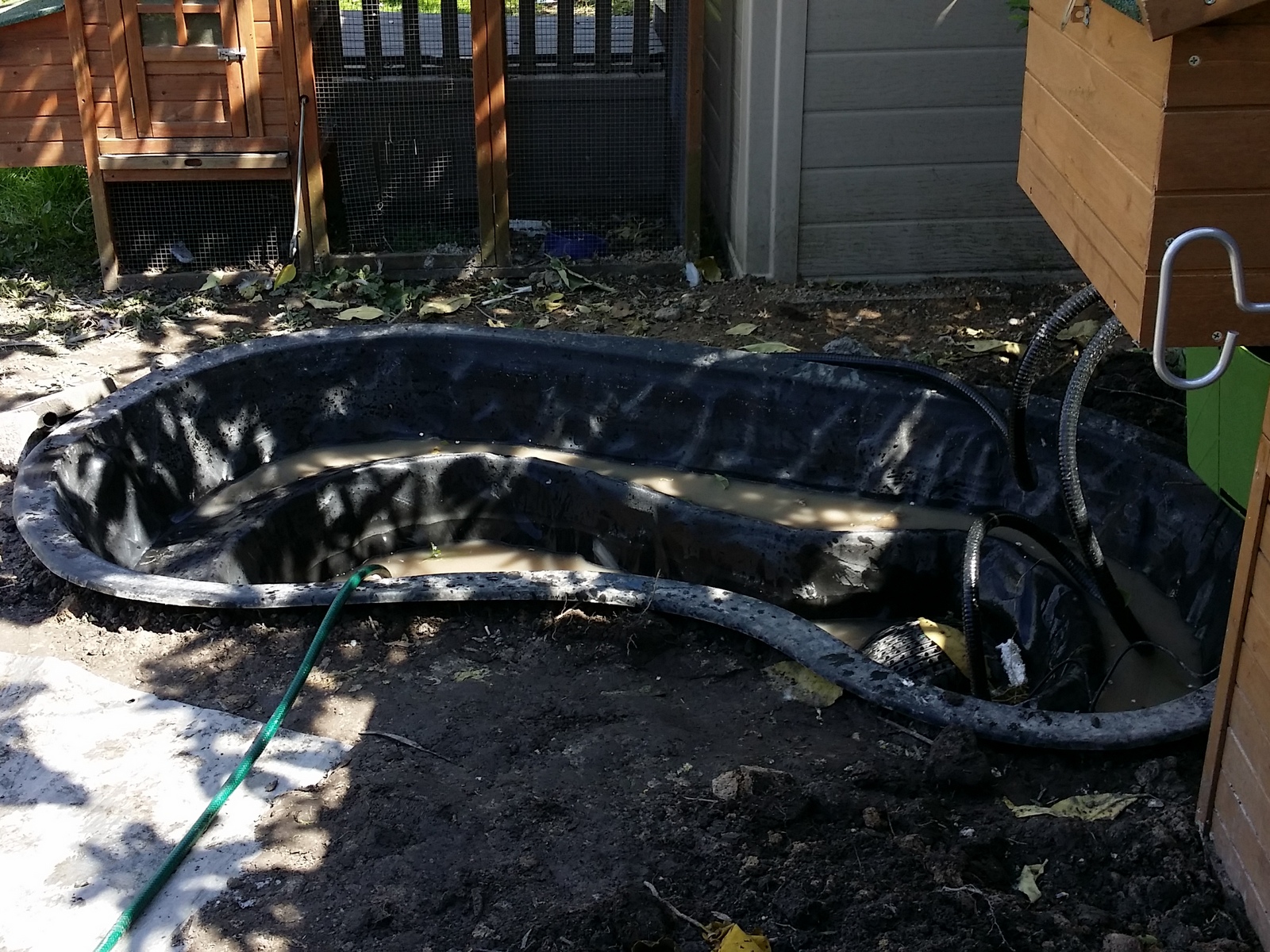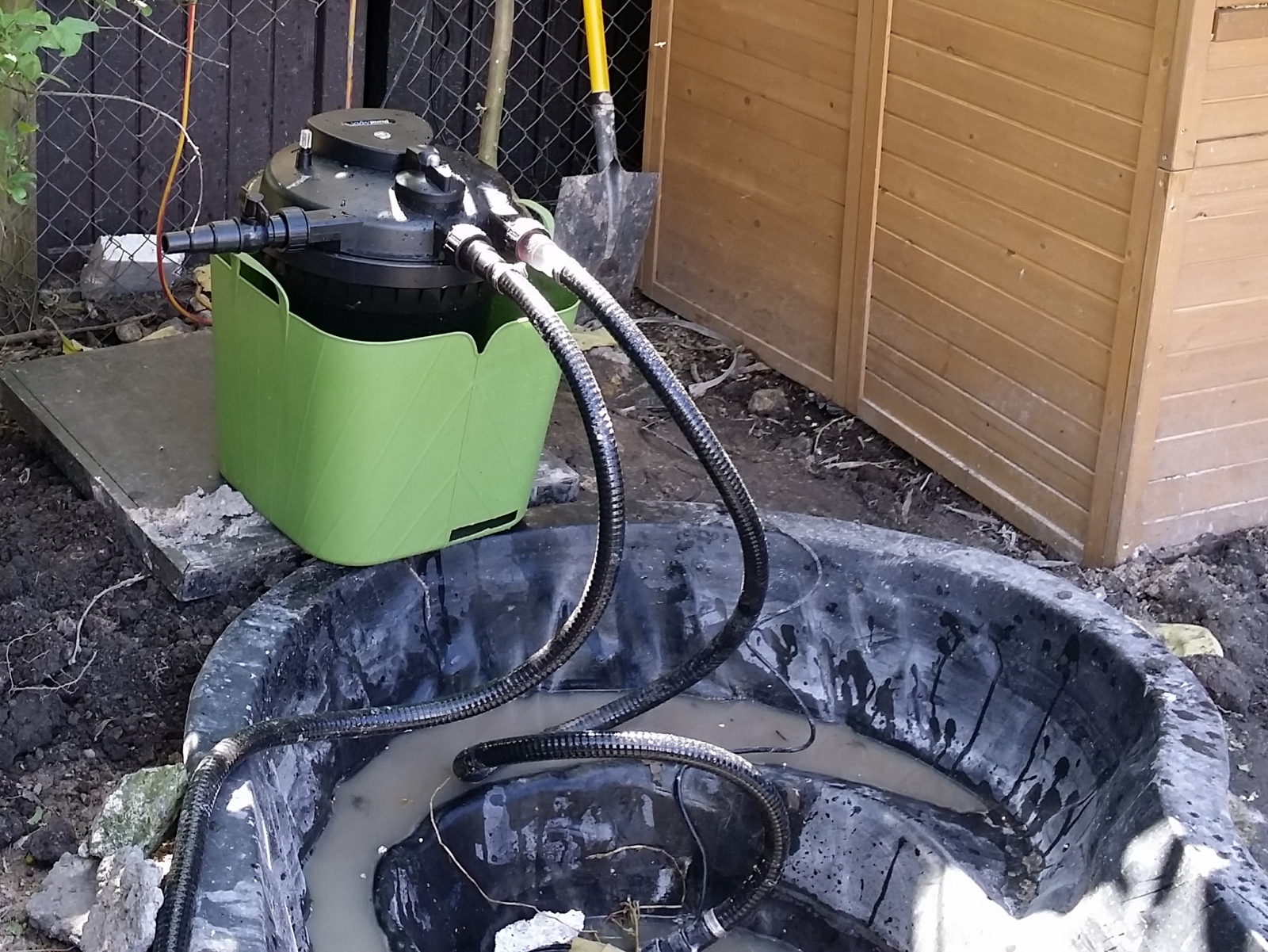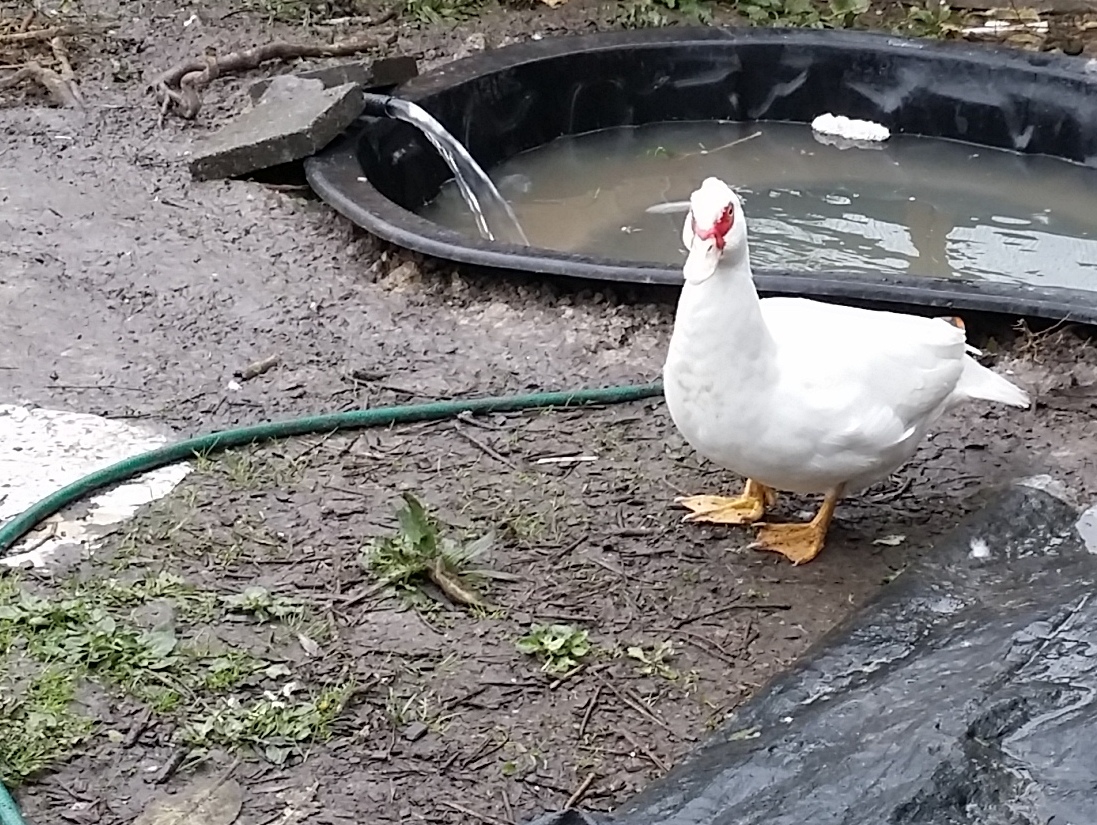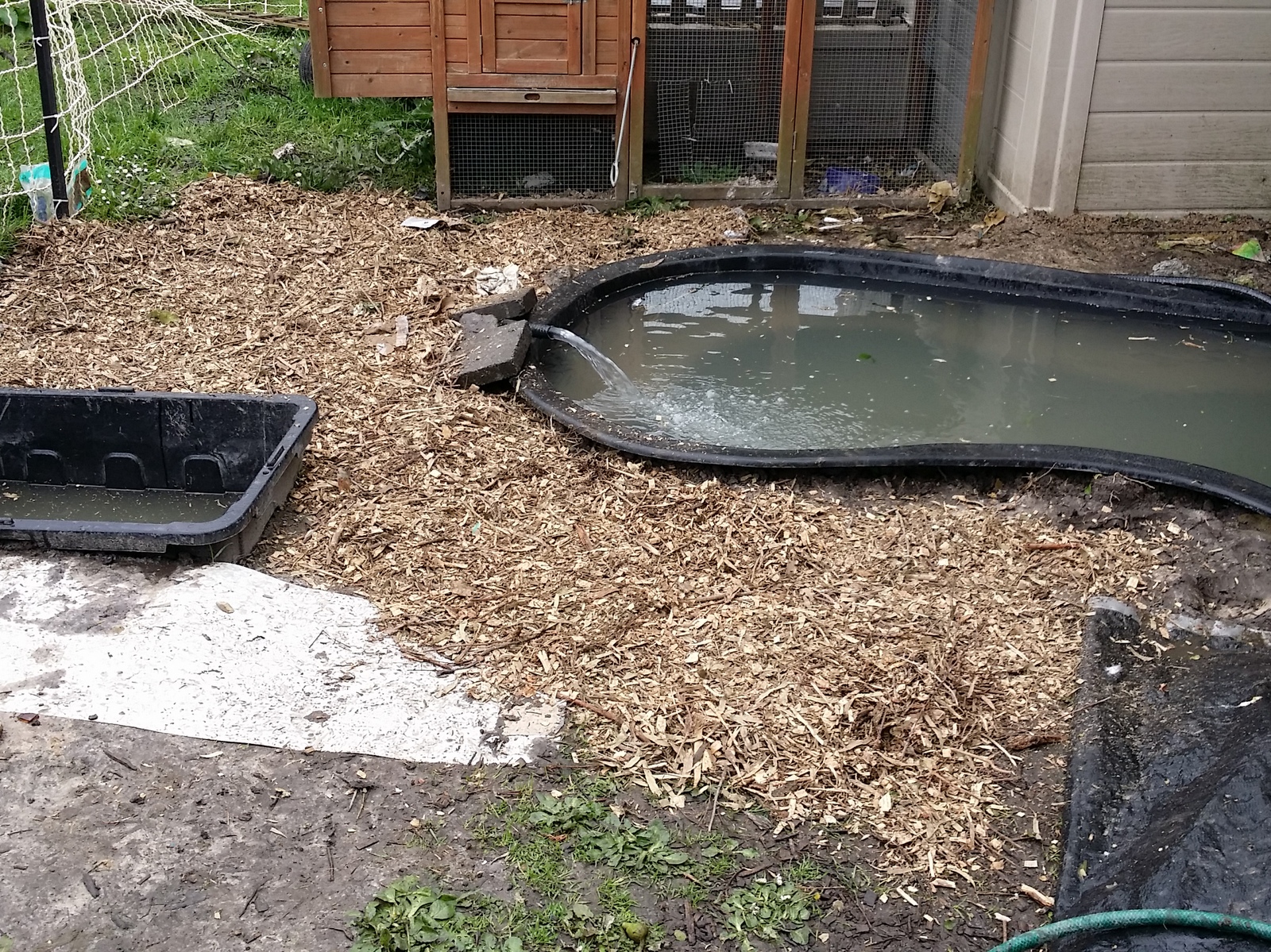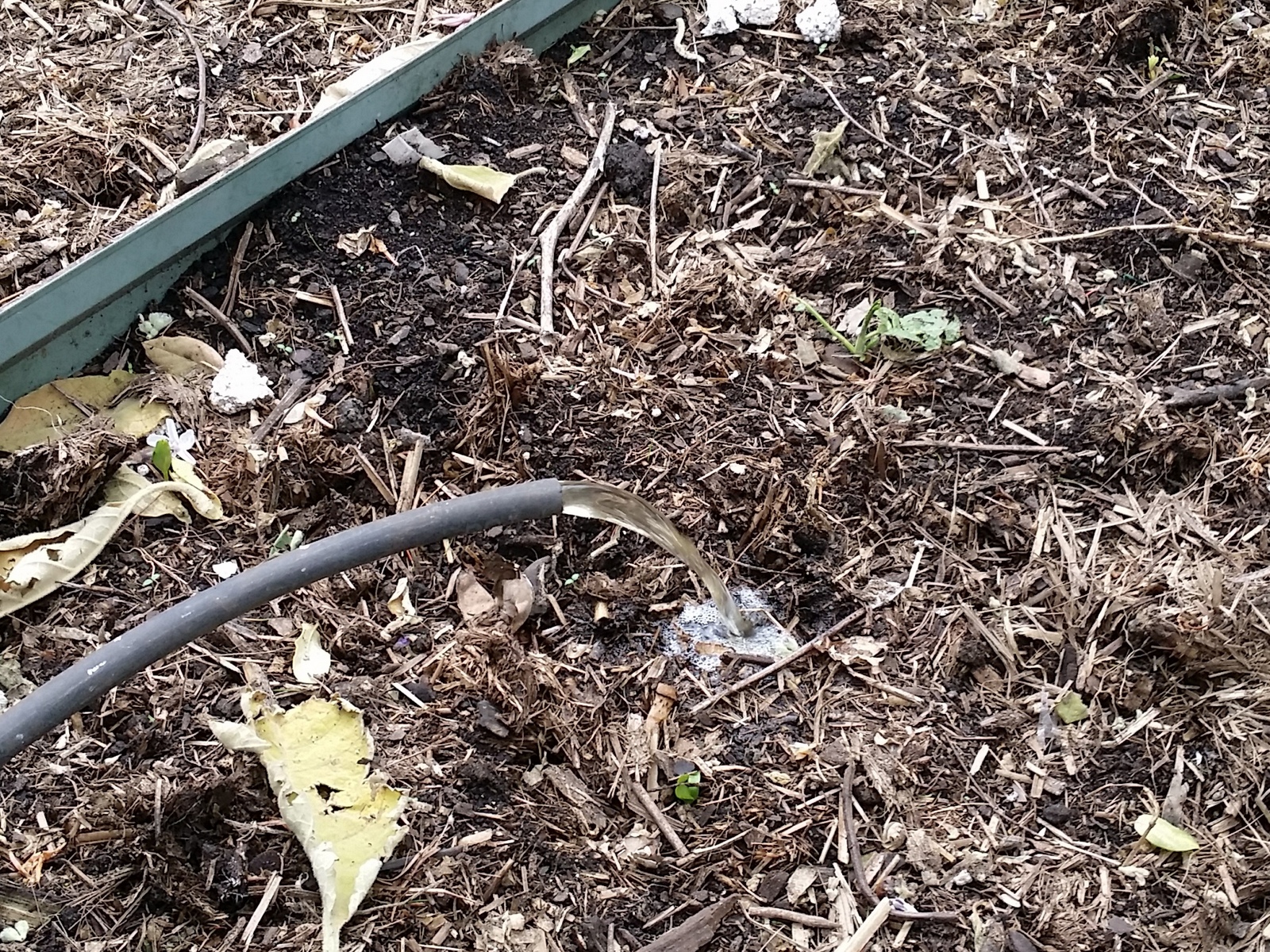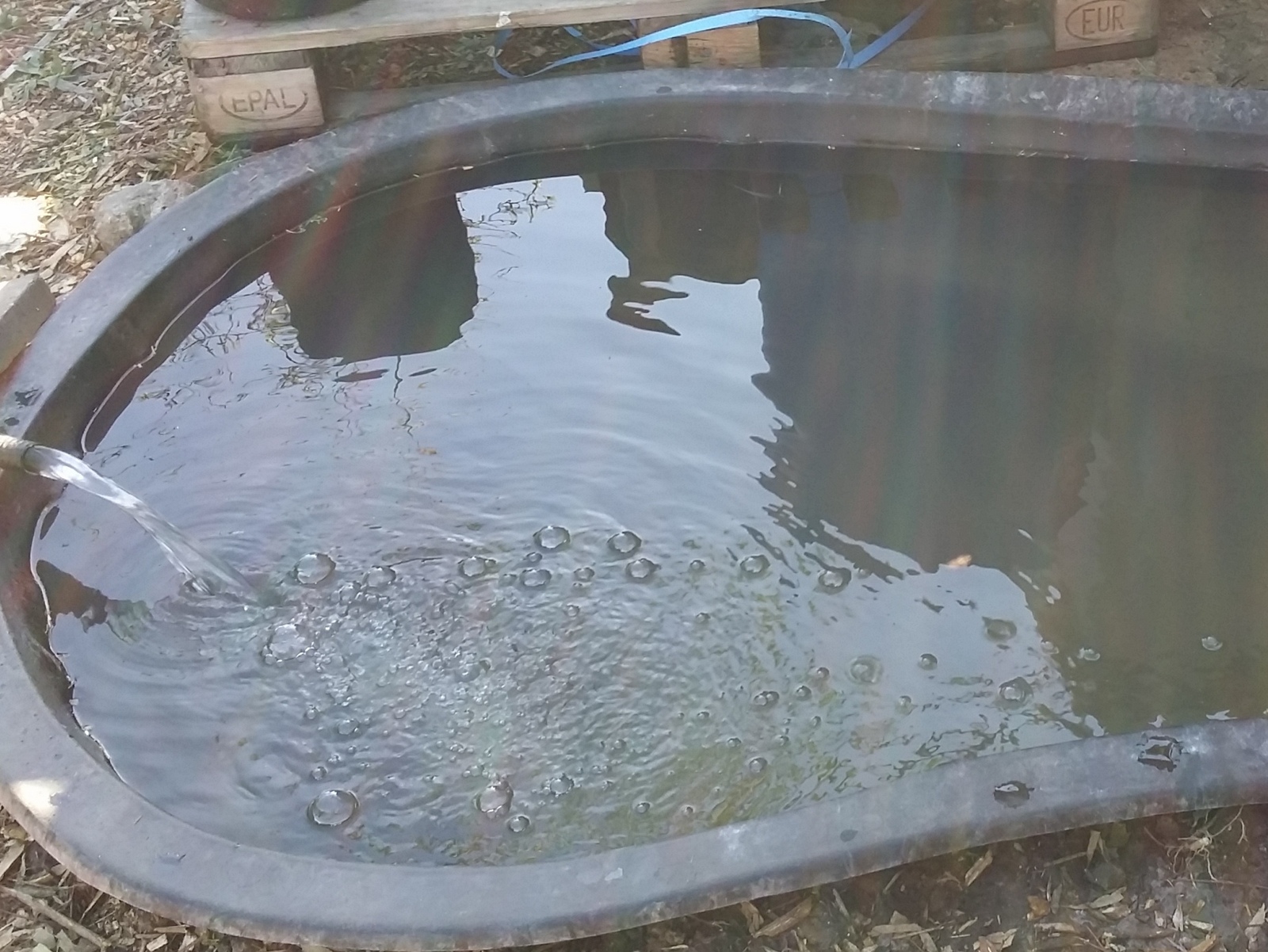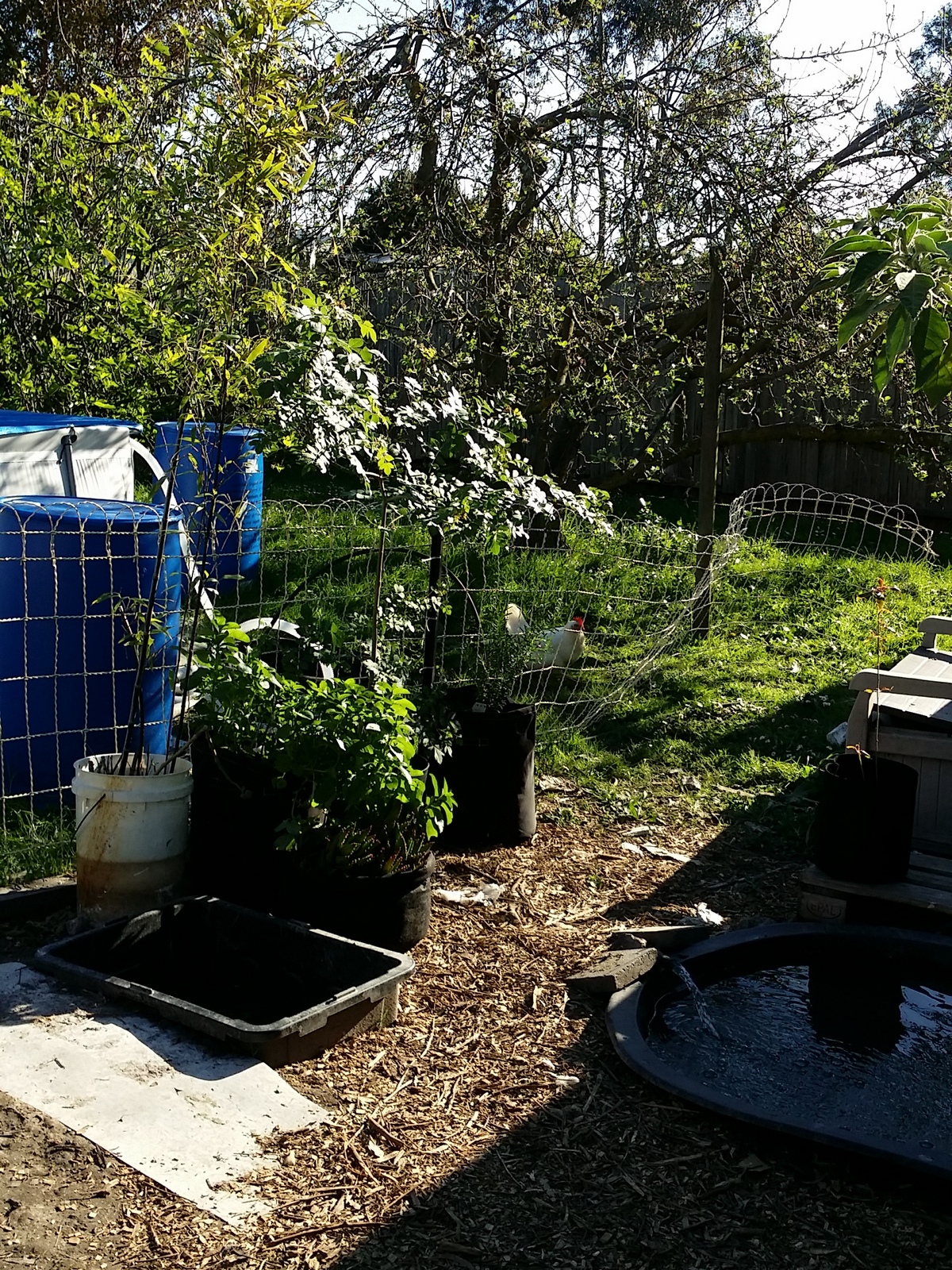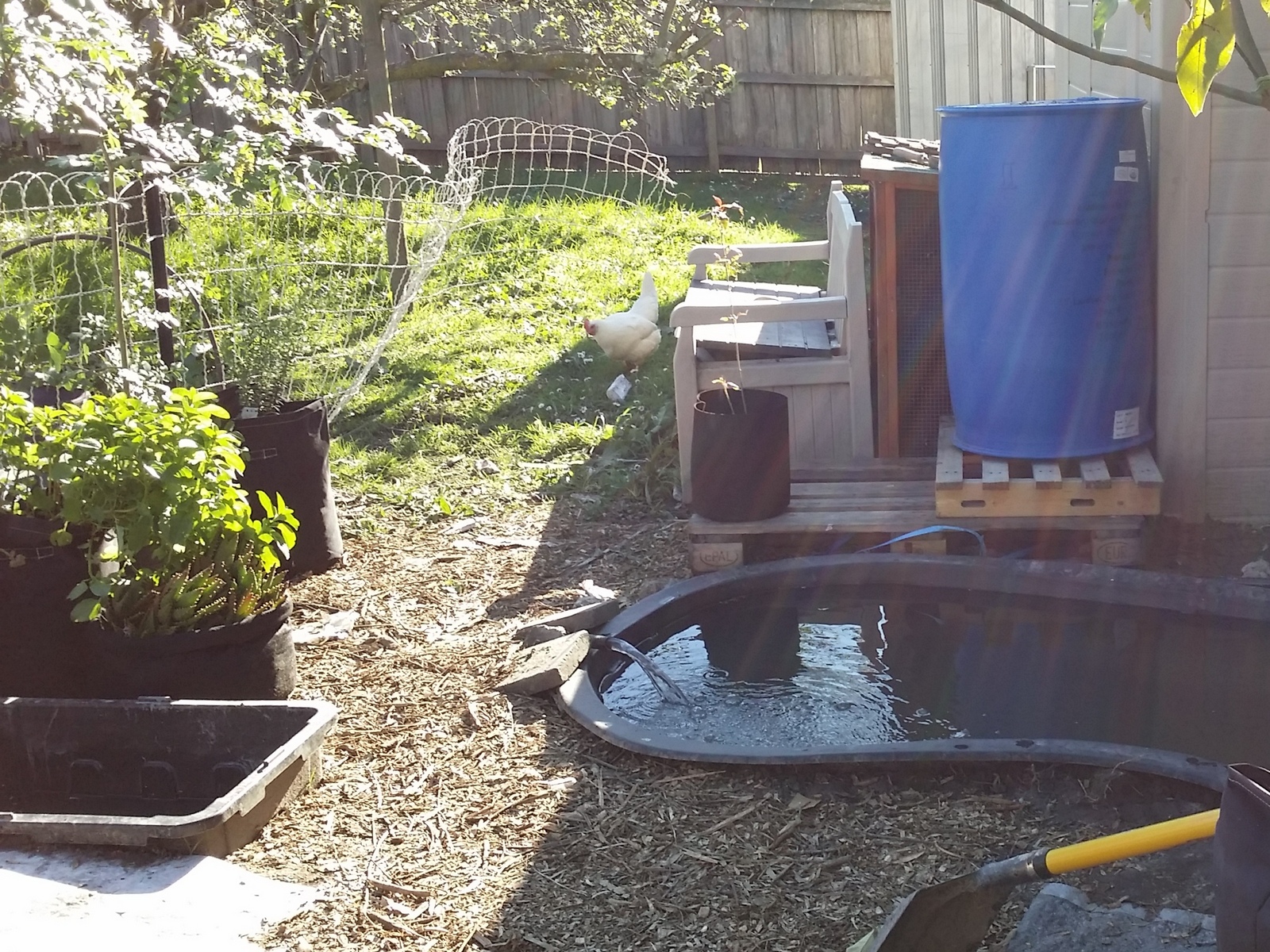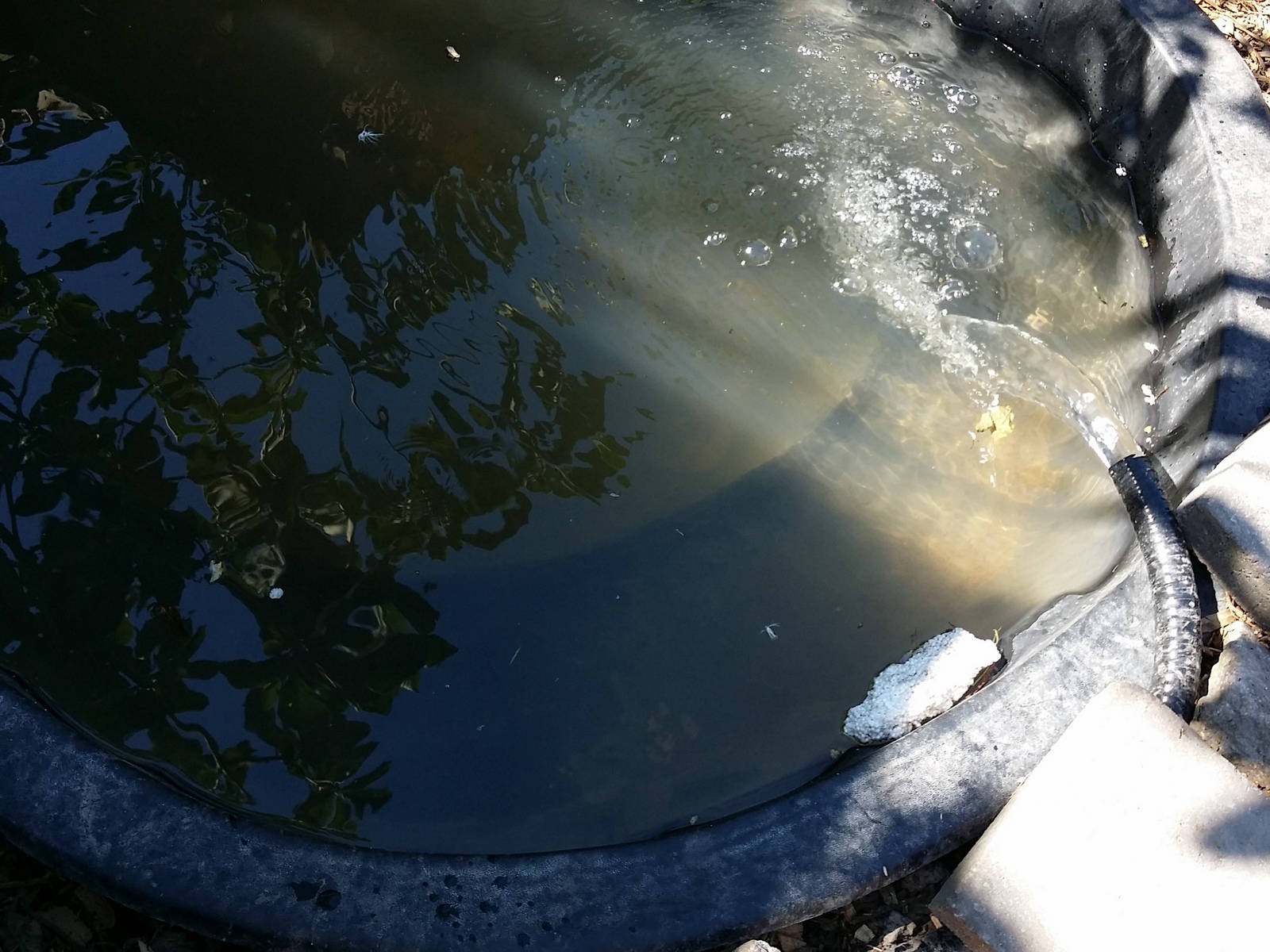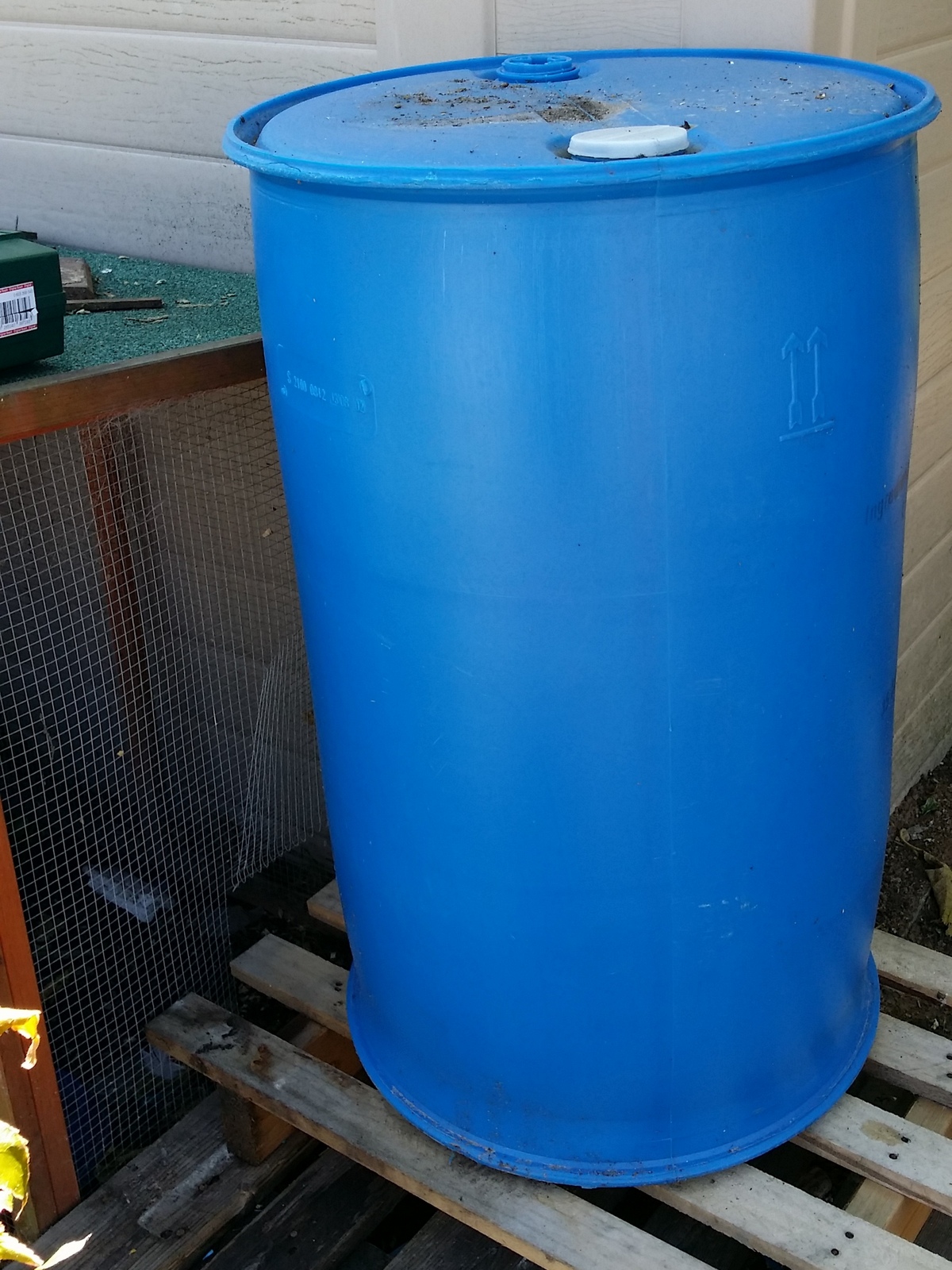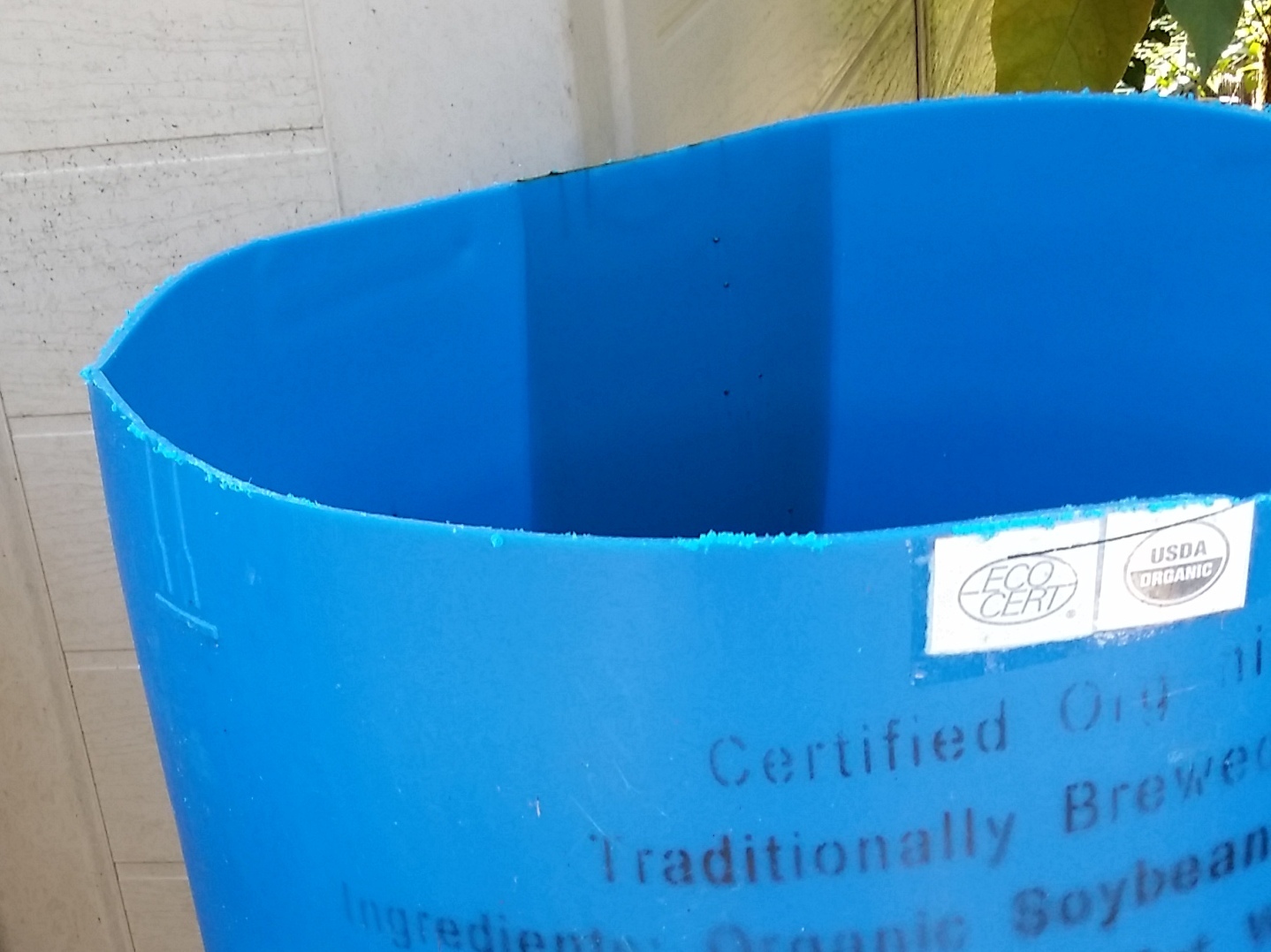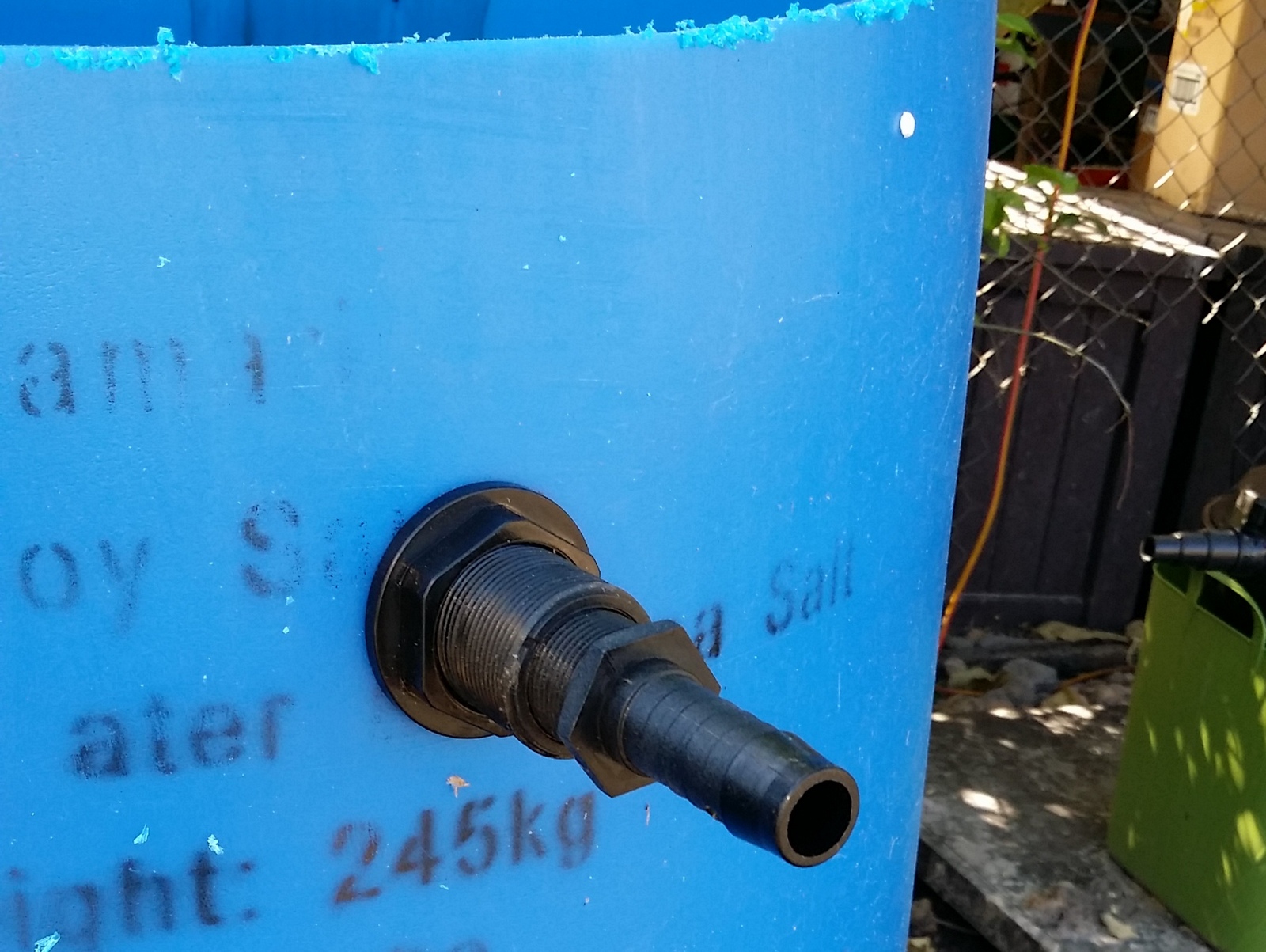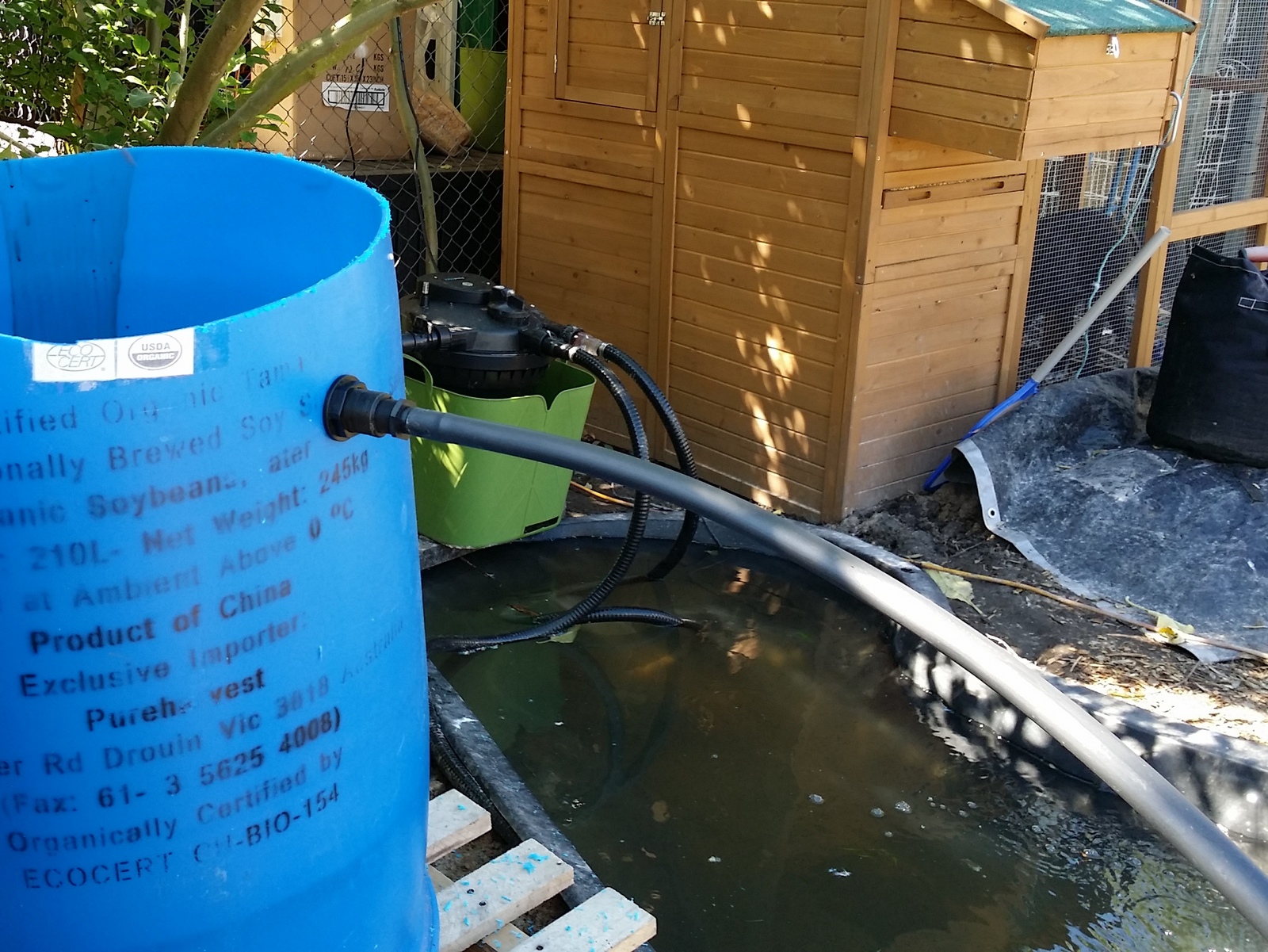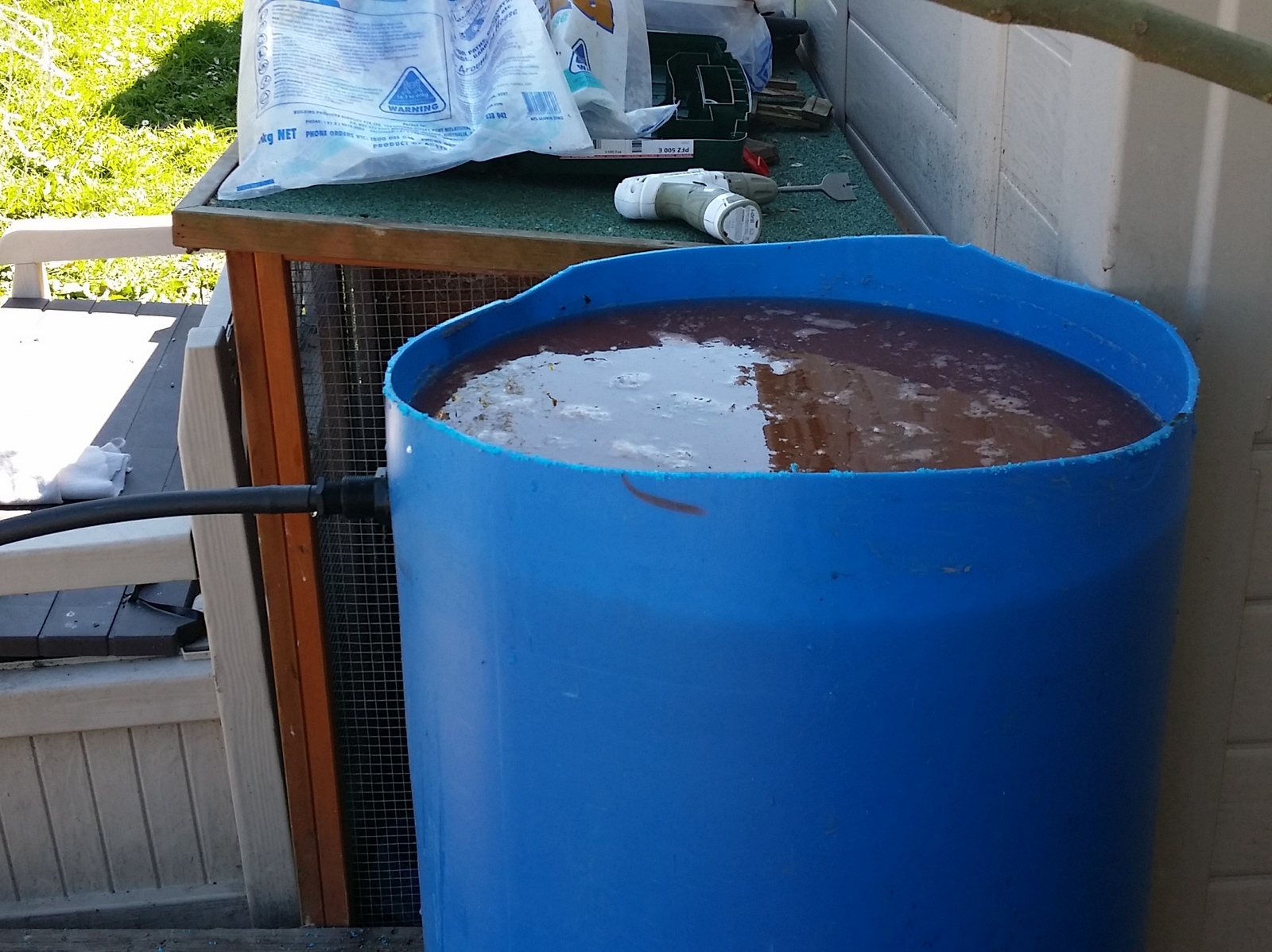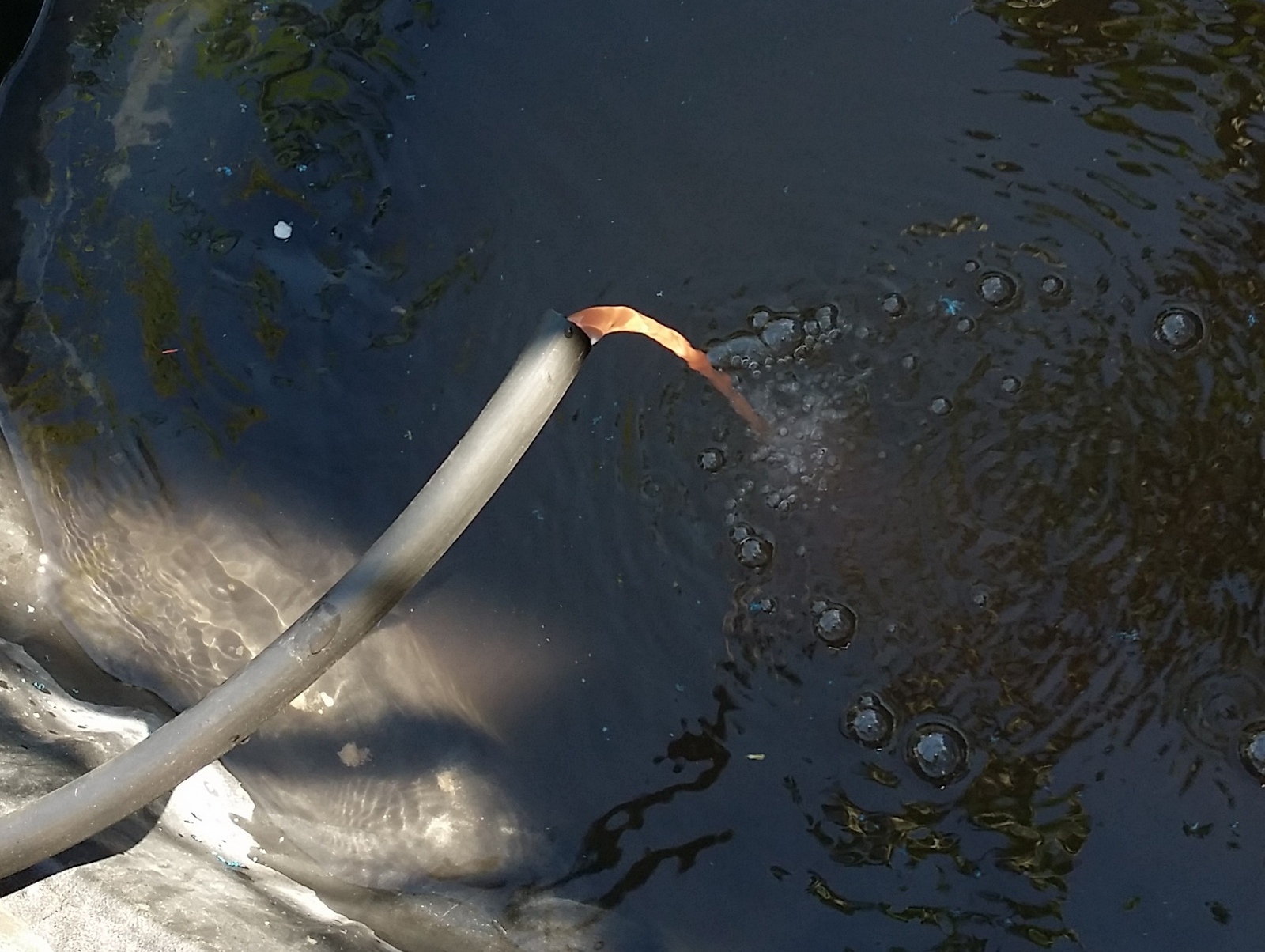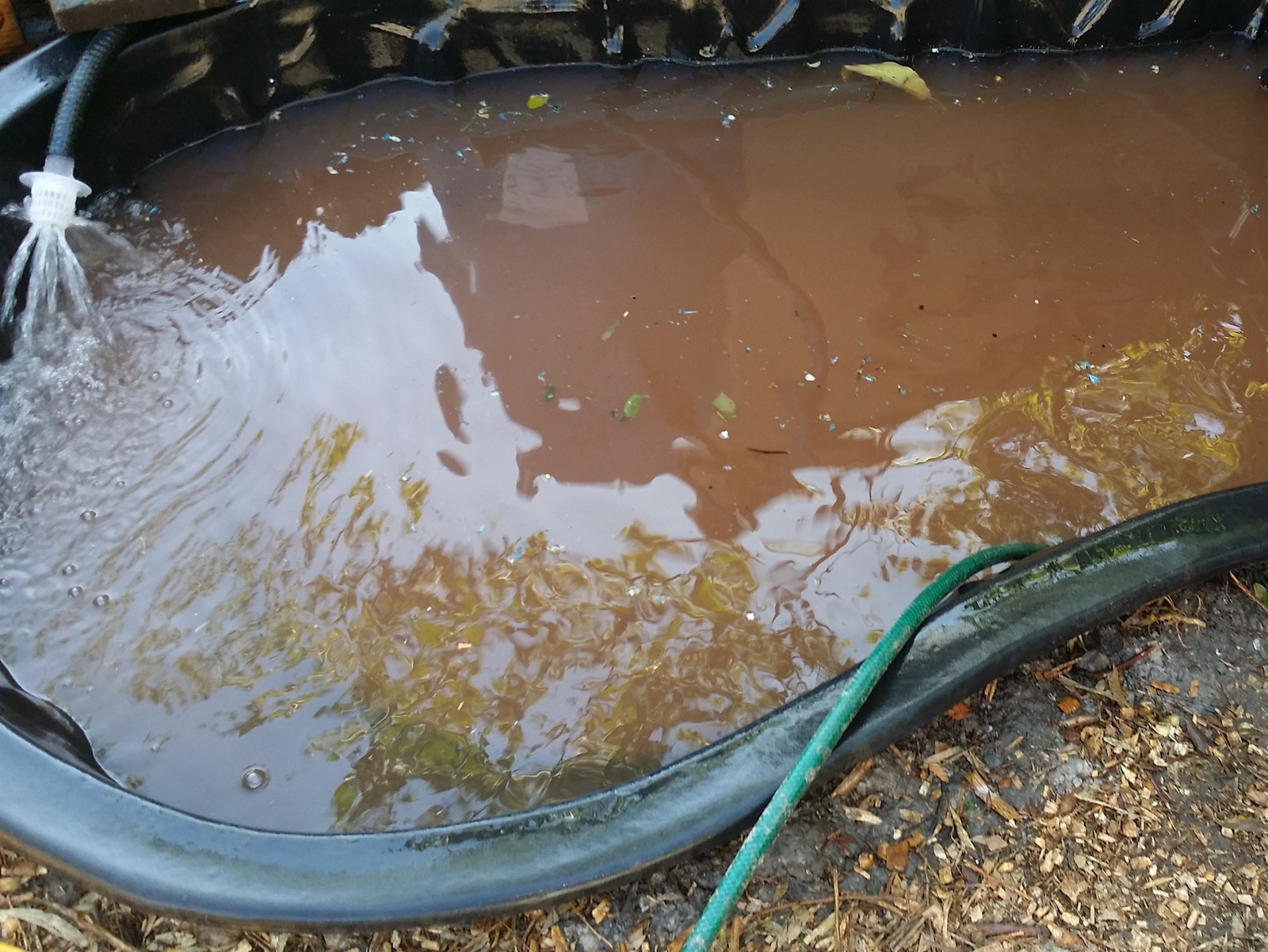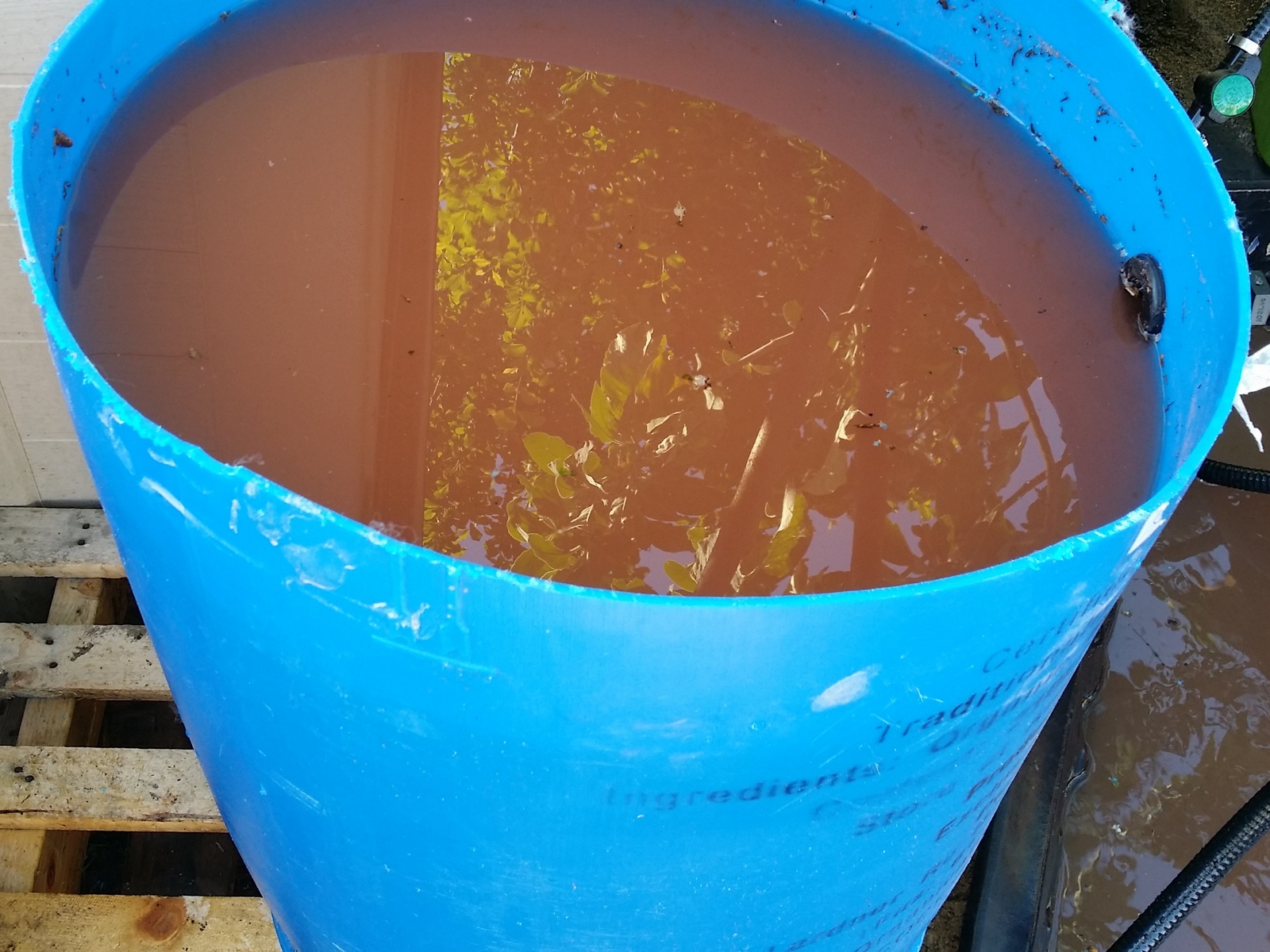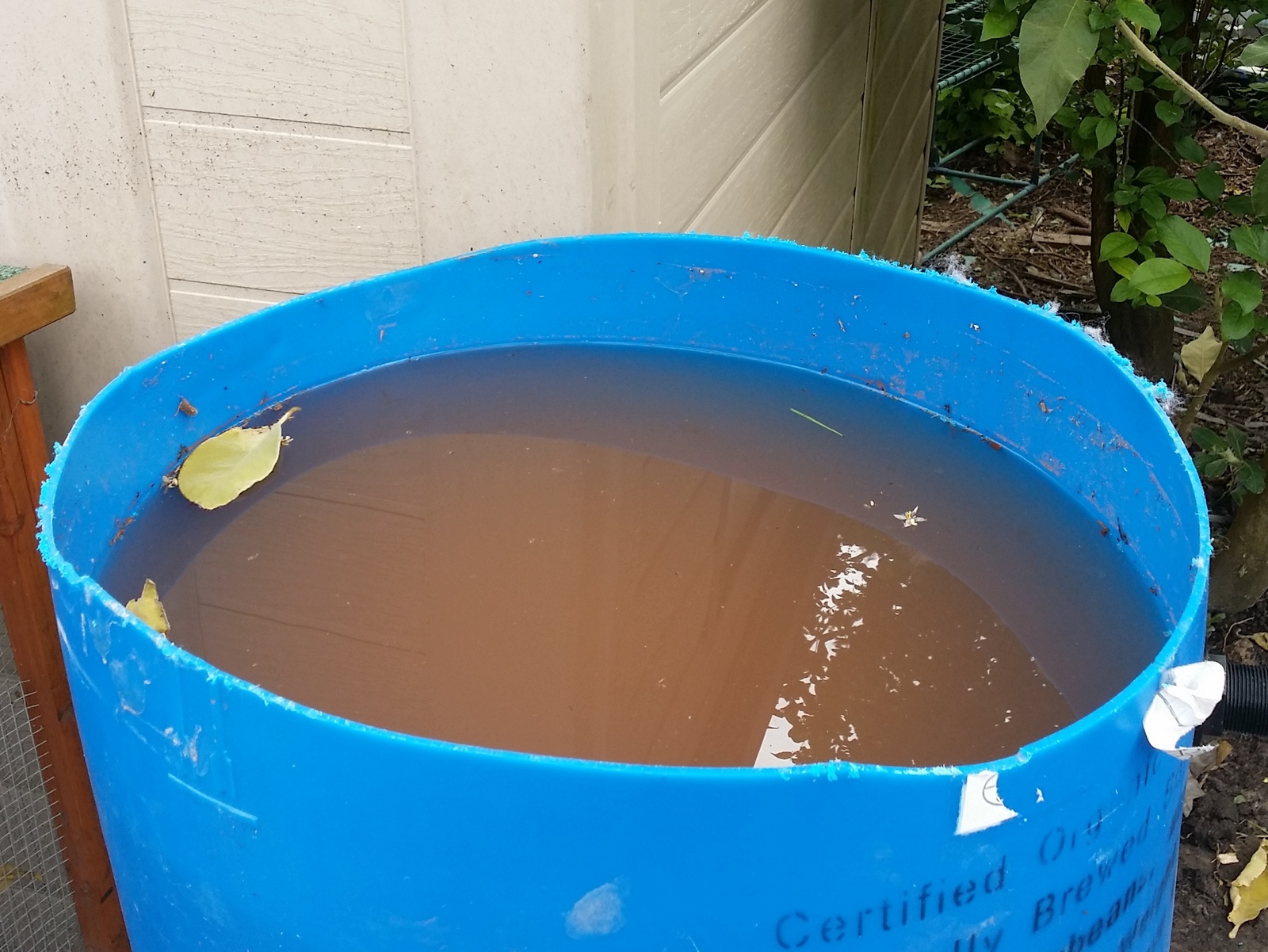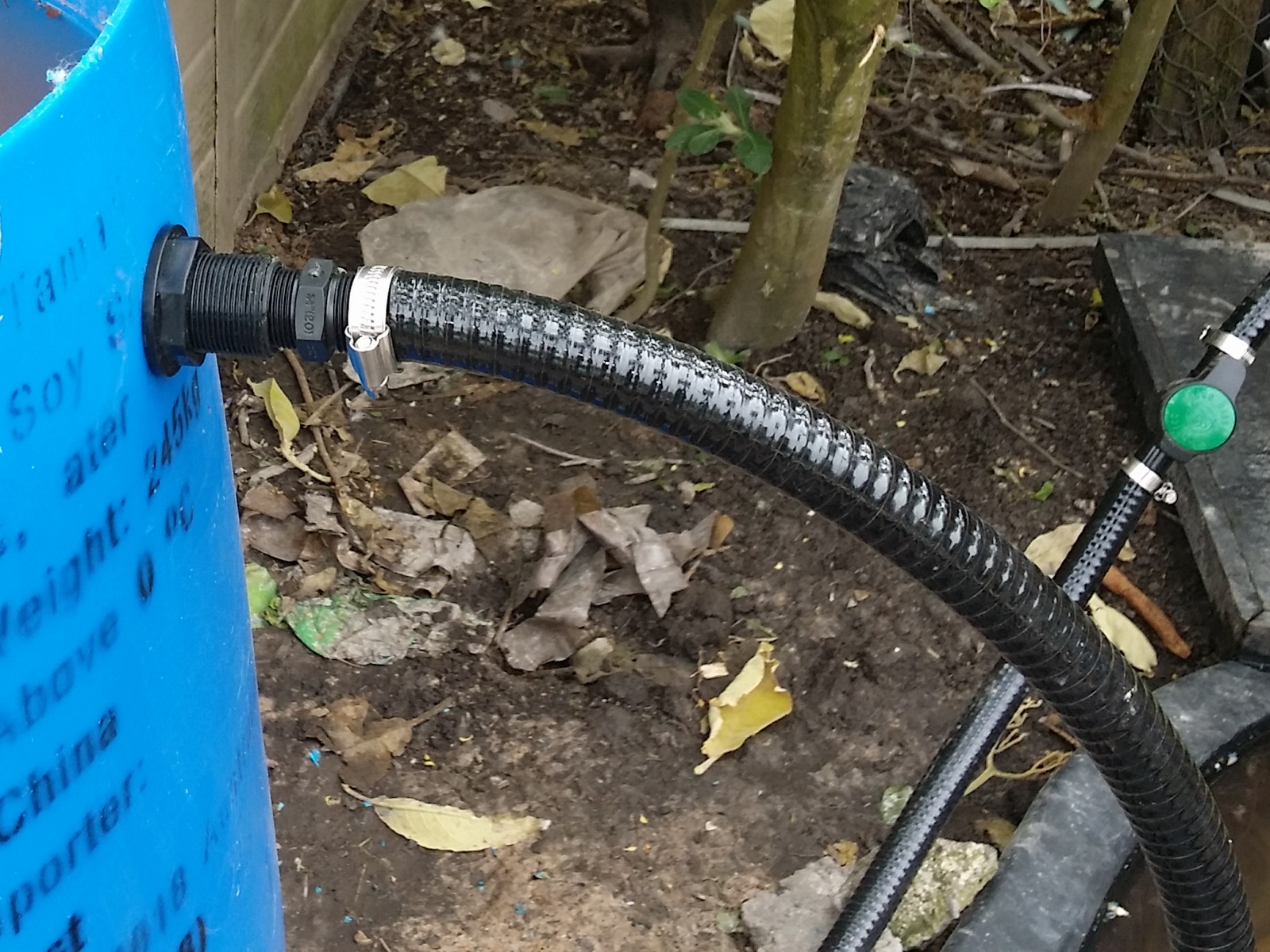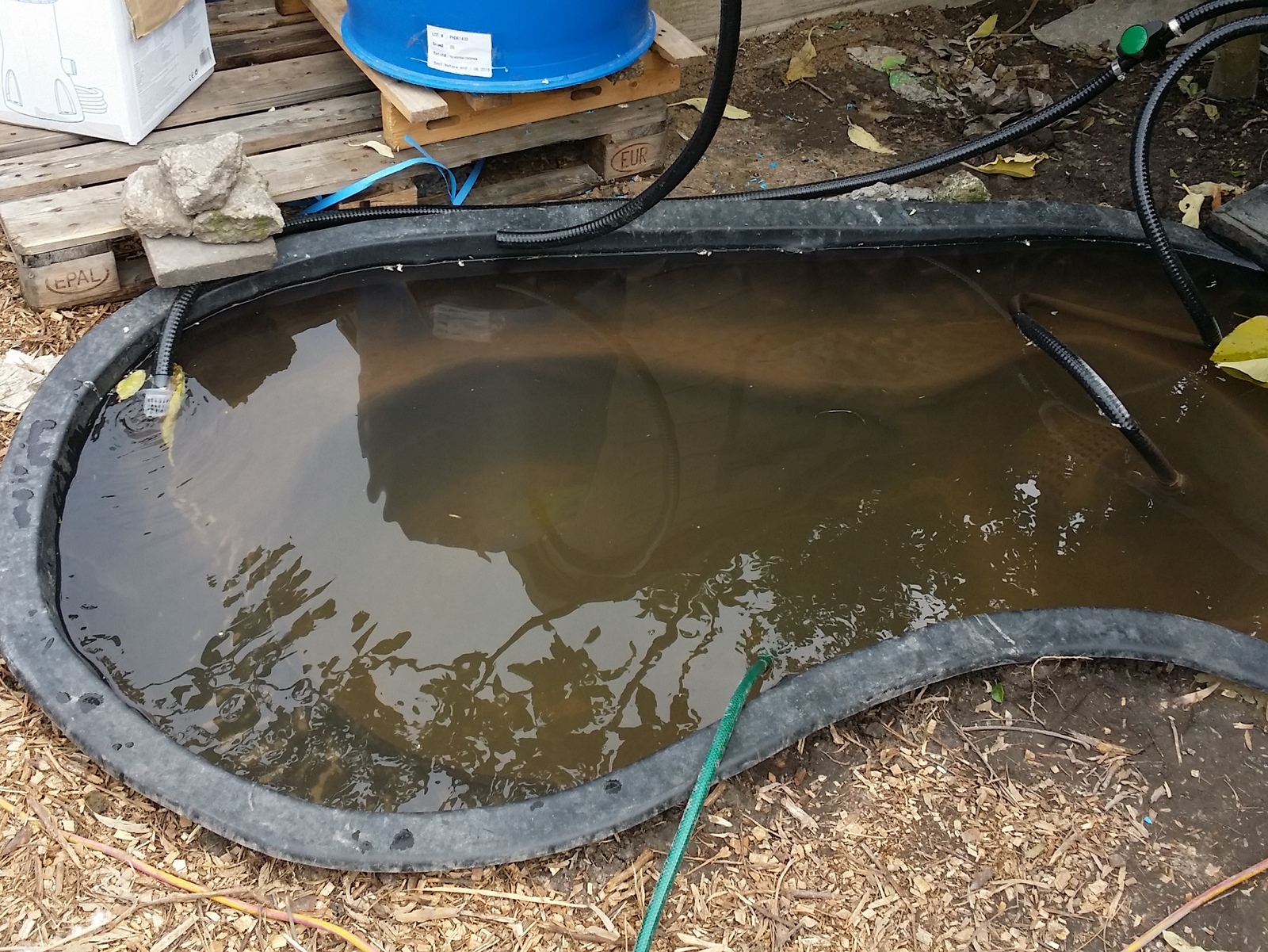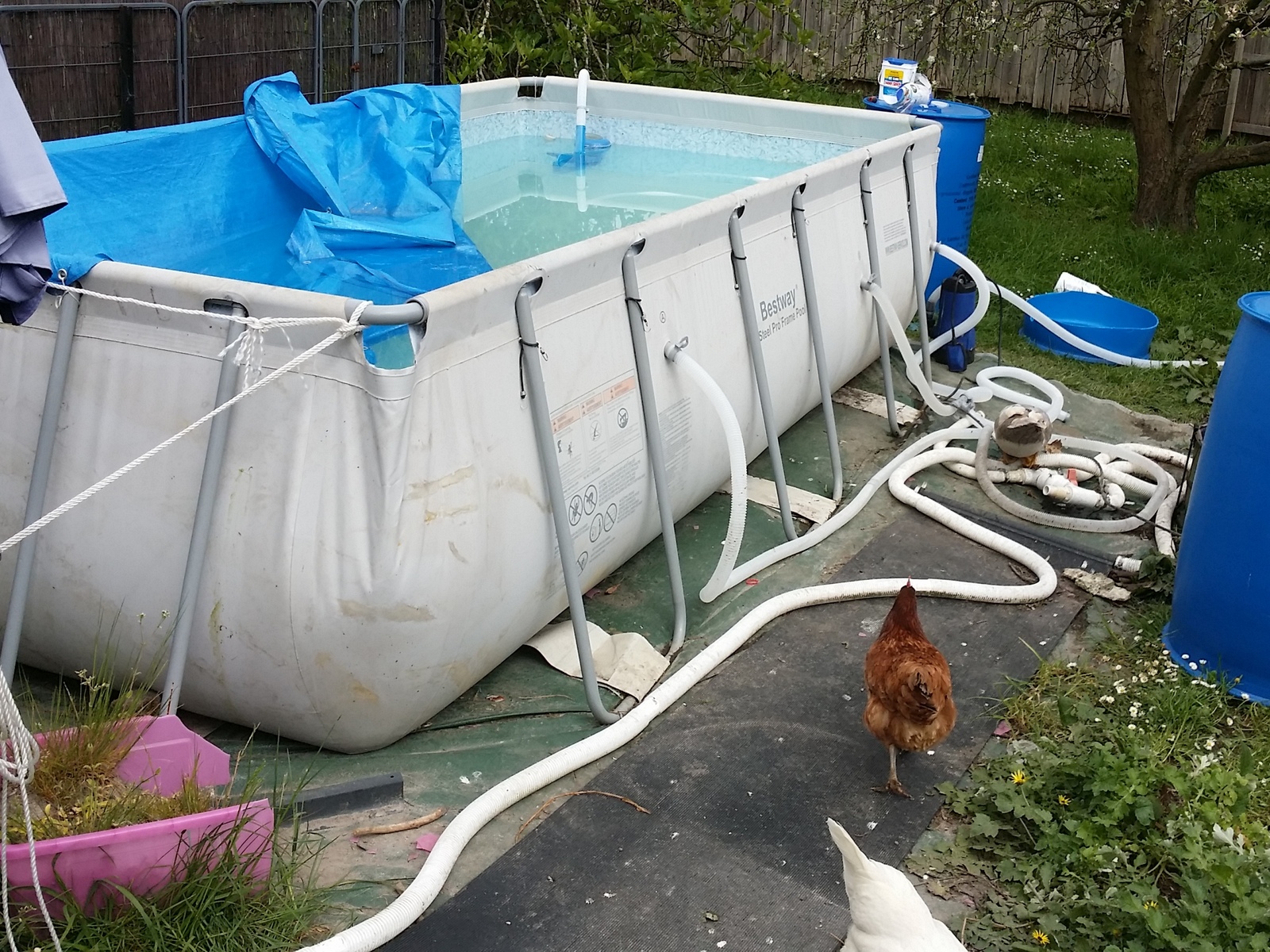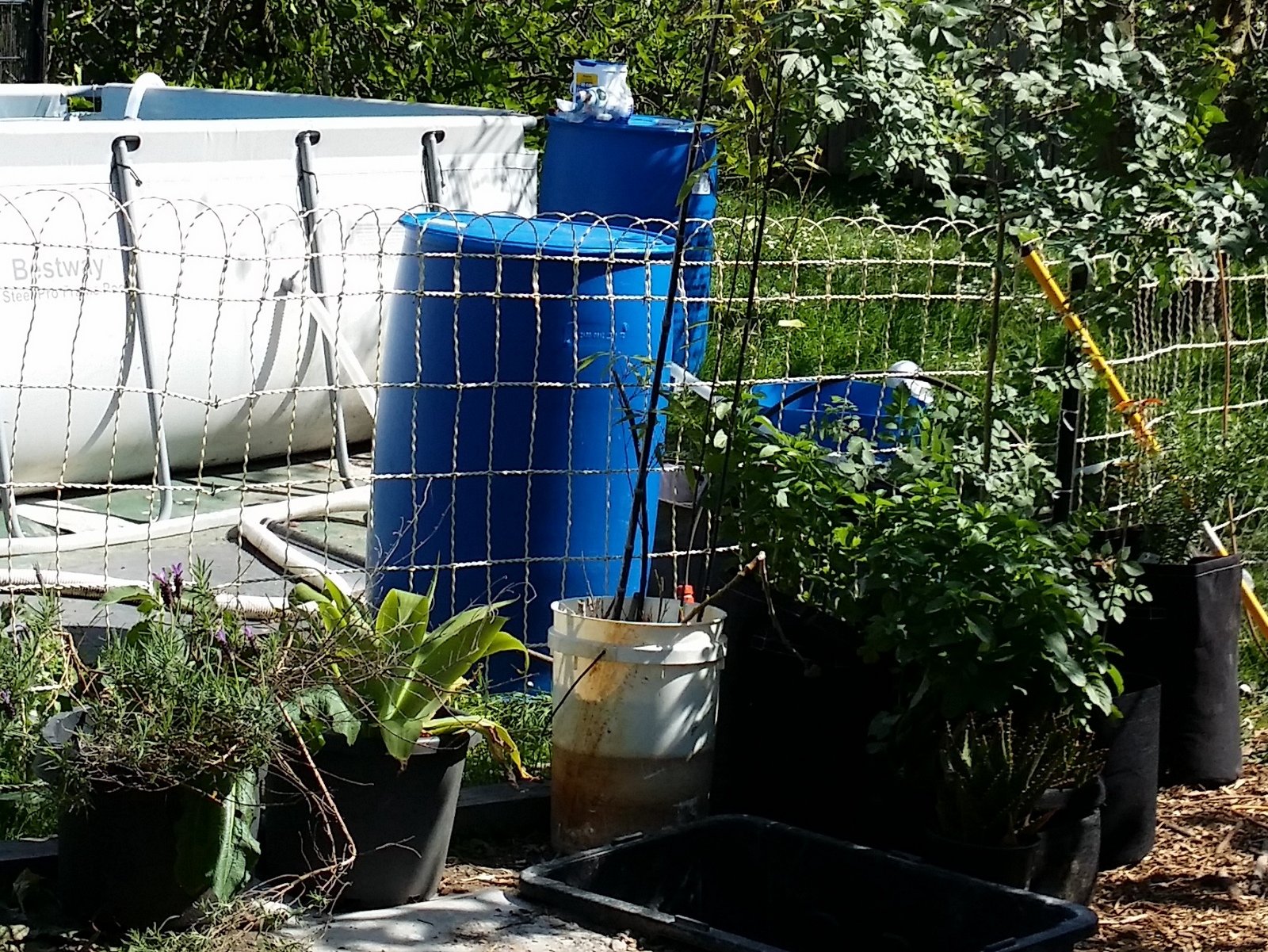The question of what to do with the duck pond/bath has been on my mind for a while.
For anyone who doesn’t know, ducks make their water very dirty, very quickly. The ideal solution would be to have some kind of ‘always-on’ (or daylight-hours-on) pump and filter that automatically kept the water clean.
Many people online seem to think this is an unattainable goal however – that there is no filter able to stand up to the filthiness of ducks. I’m not quite ready to accept that verdict, and do eventually want to put together some kind of recirculating and cleaning mechanism, though the format it will take is still far from clear.
However, there’s a more pressing issue to my mind. I finally got a good look at one of the girls having a bath in the existing ‘duck pond’ which is one of those cheapo ‘clamshell’ kiddie pools. I was disappointed to see it isn’t deep enough for them to swim in. Edina was having a ball washing herself in it and (I think) poking around on the bottom for things to eat. But her feet were planted squarely on the bottom of the pool. I managed to get a video of this.
I really feel like swimming should be an option, even if only in a very small space. So I hatched a plan to make it possible. I went to town looking for the largest plastic container I could find that didn’t seem like it would break easily, then came home and dug a big hole in the ground to sink it into, so the resulting ‘pond’ (‘bath’ is probably a more appropriate name). would be roughly at ground level. You can see the process in the gallery below.
That was yesterday, and today I can see the water is much dirtier, and an inch lower in the tub (despite half an inch of rain last night) – both sure signs they’ve been in there having fun. So I call that a success, so far.
I also have the main components ready for the next stage of development, which is a dirty water pump to empty the water, and a 200 liter barrel to empty it into. So that will be Part Two in this series. After that will come the question of running a tap off the barrel that can direct water where I want it, when I want it, onto the garden beds. Then the long term project will be to explore recirculation, even if it isn’t permanent recirculation. If I can get the water staying considerably cleaner for a couple of weeks, then dump it, that’s a whole lot better than dumping it every few days.

